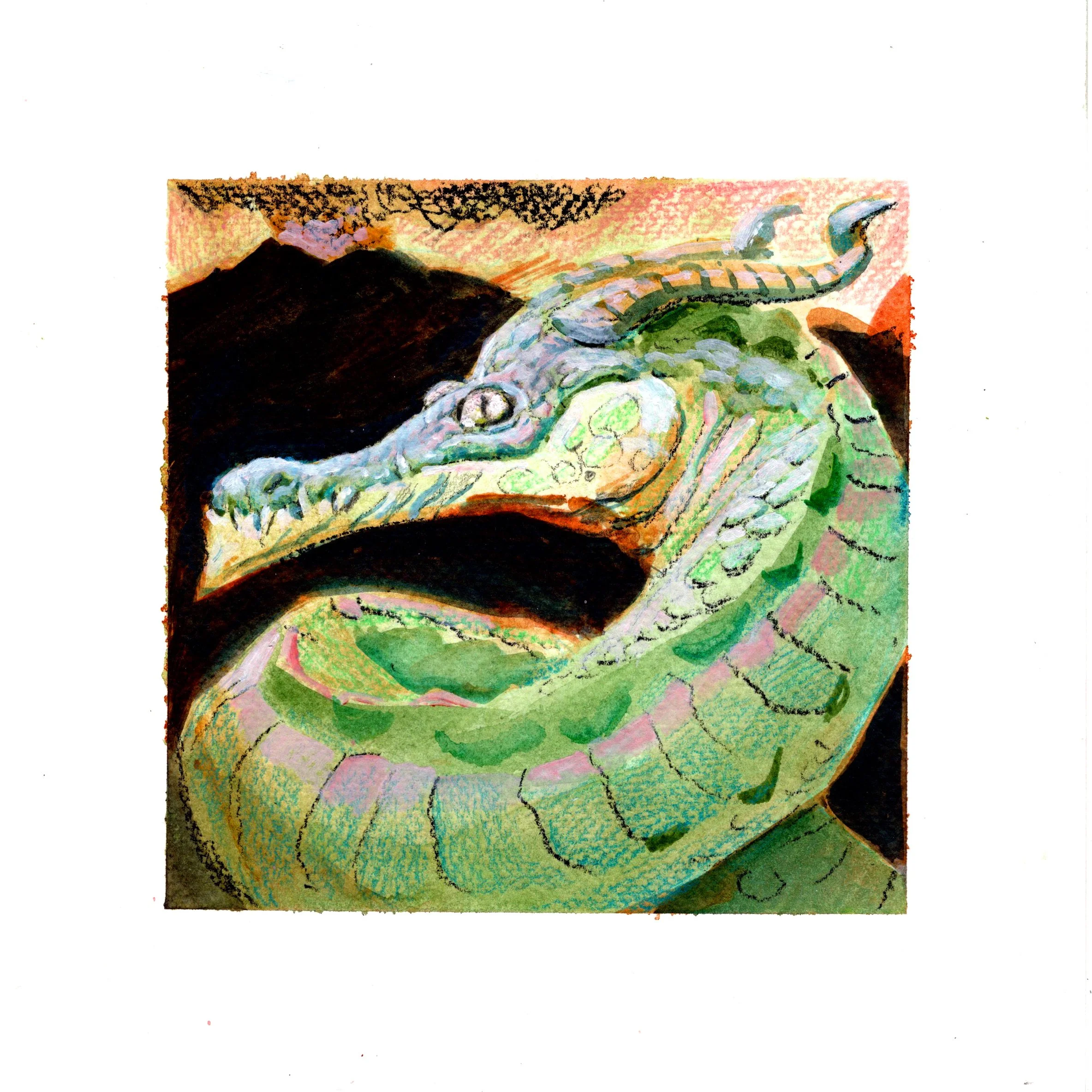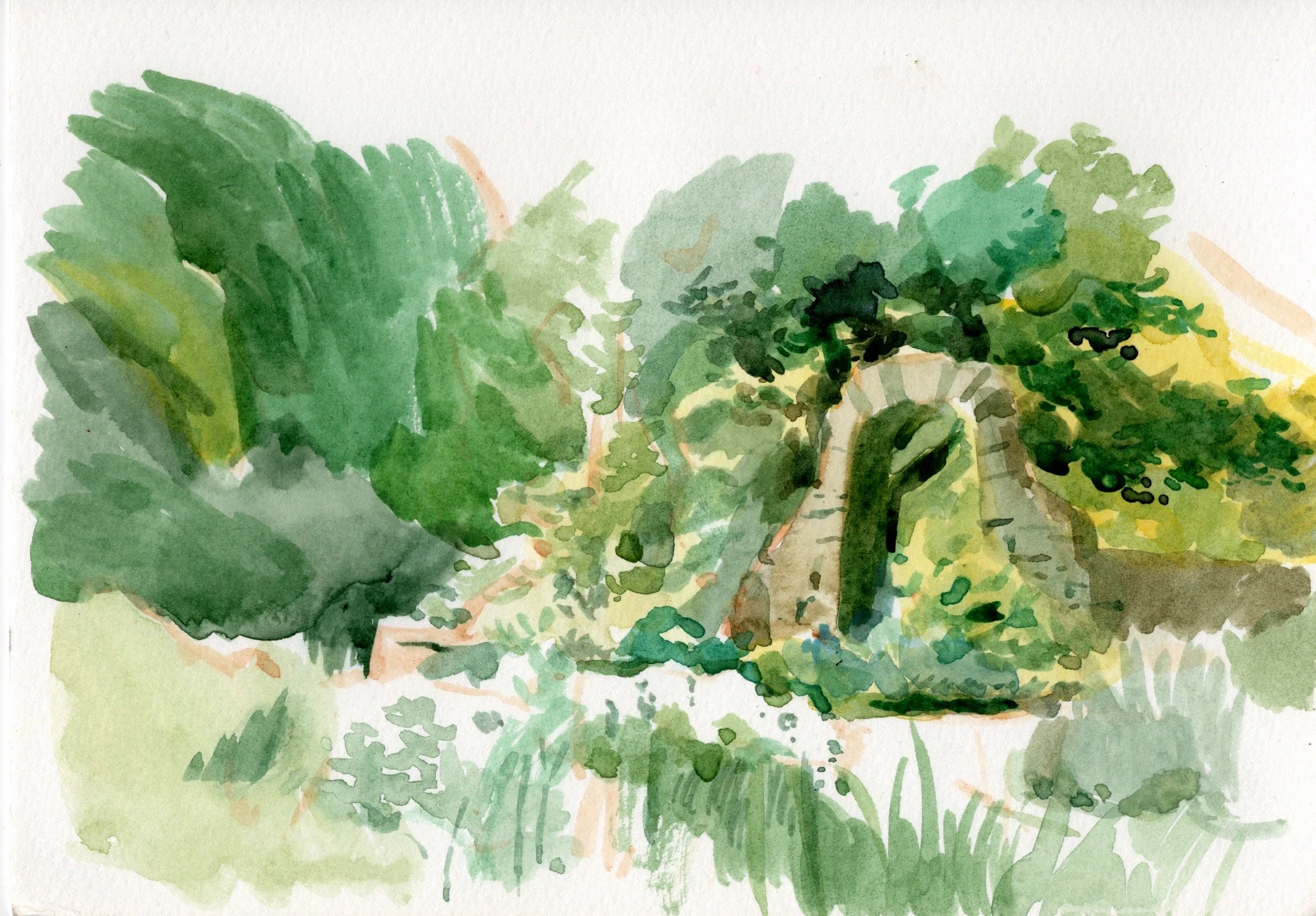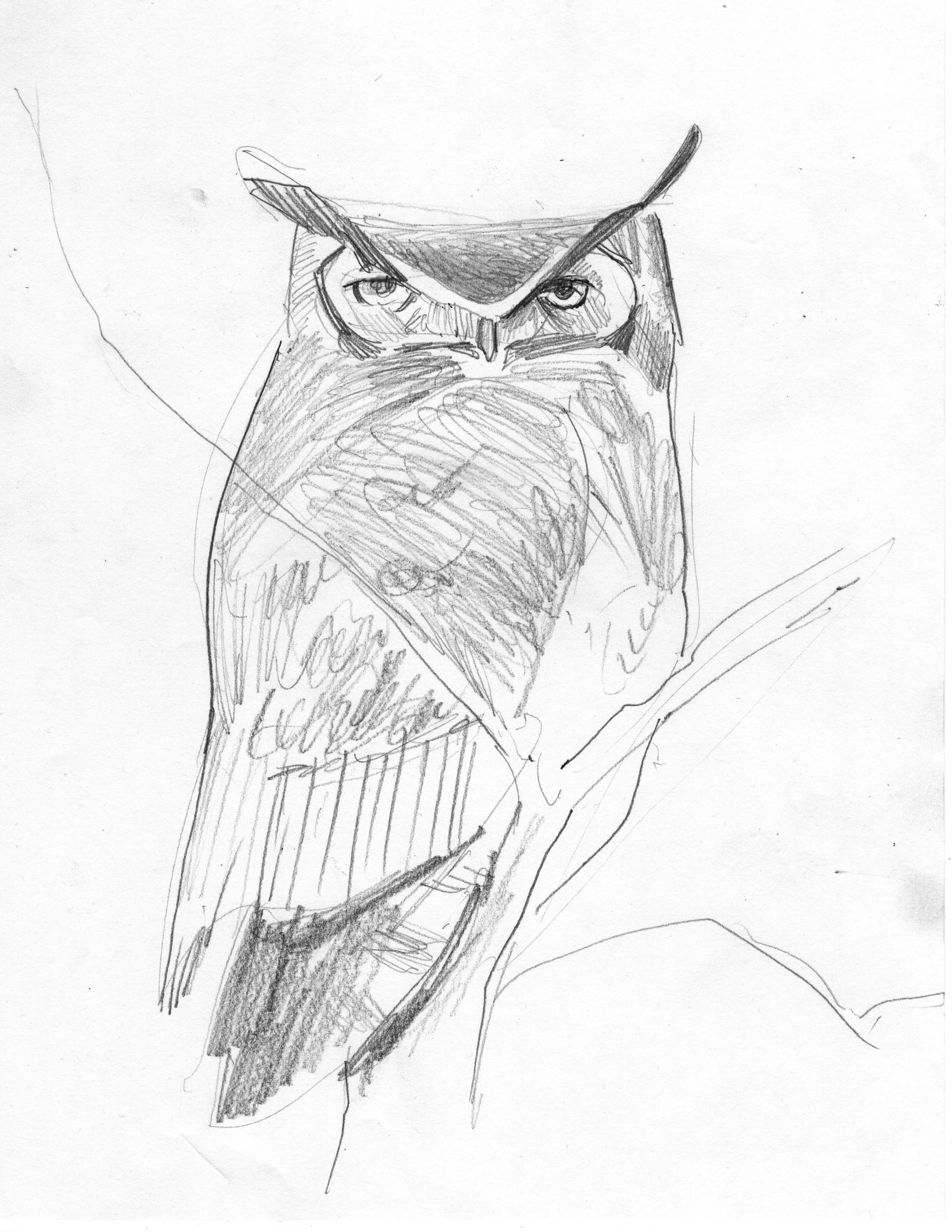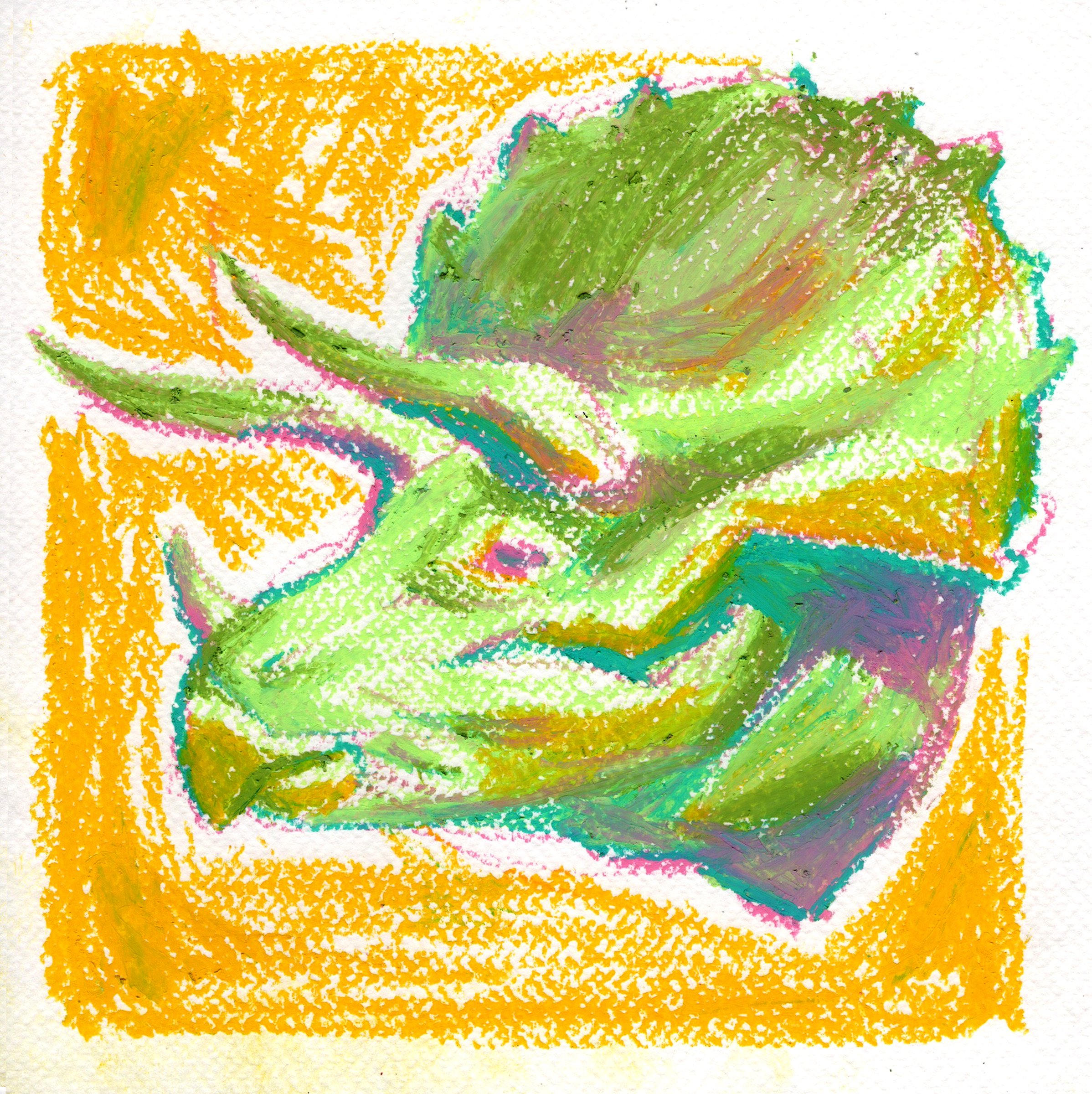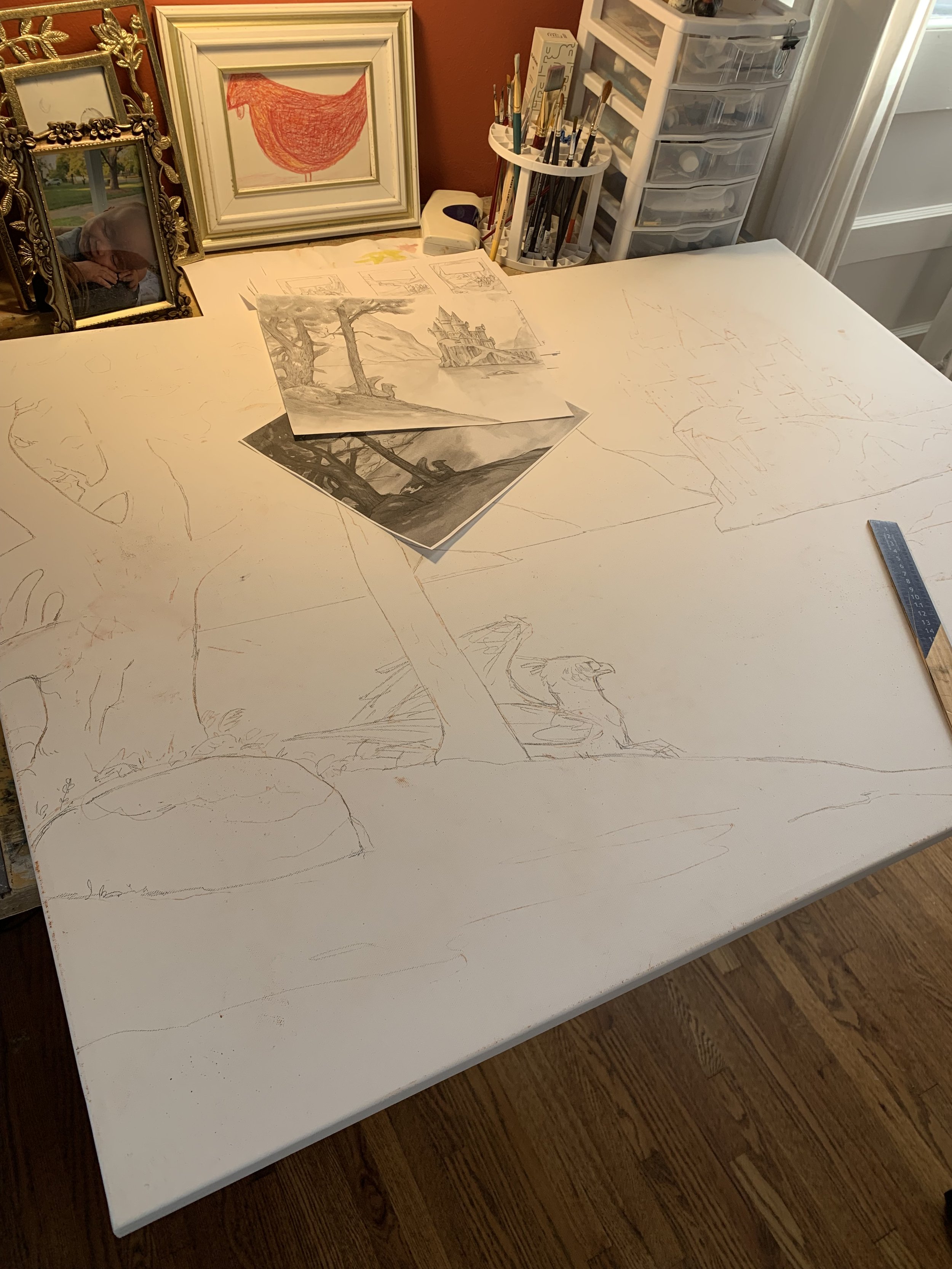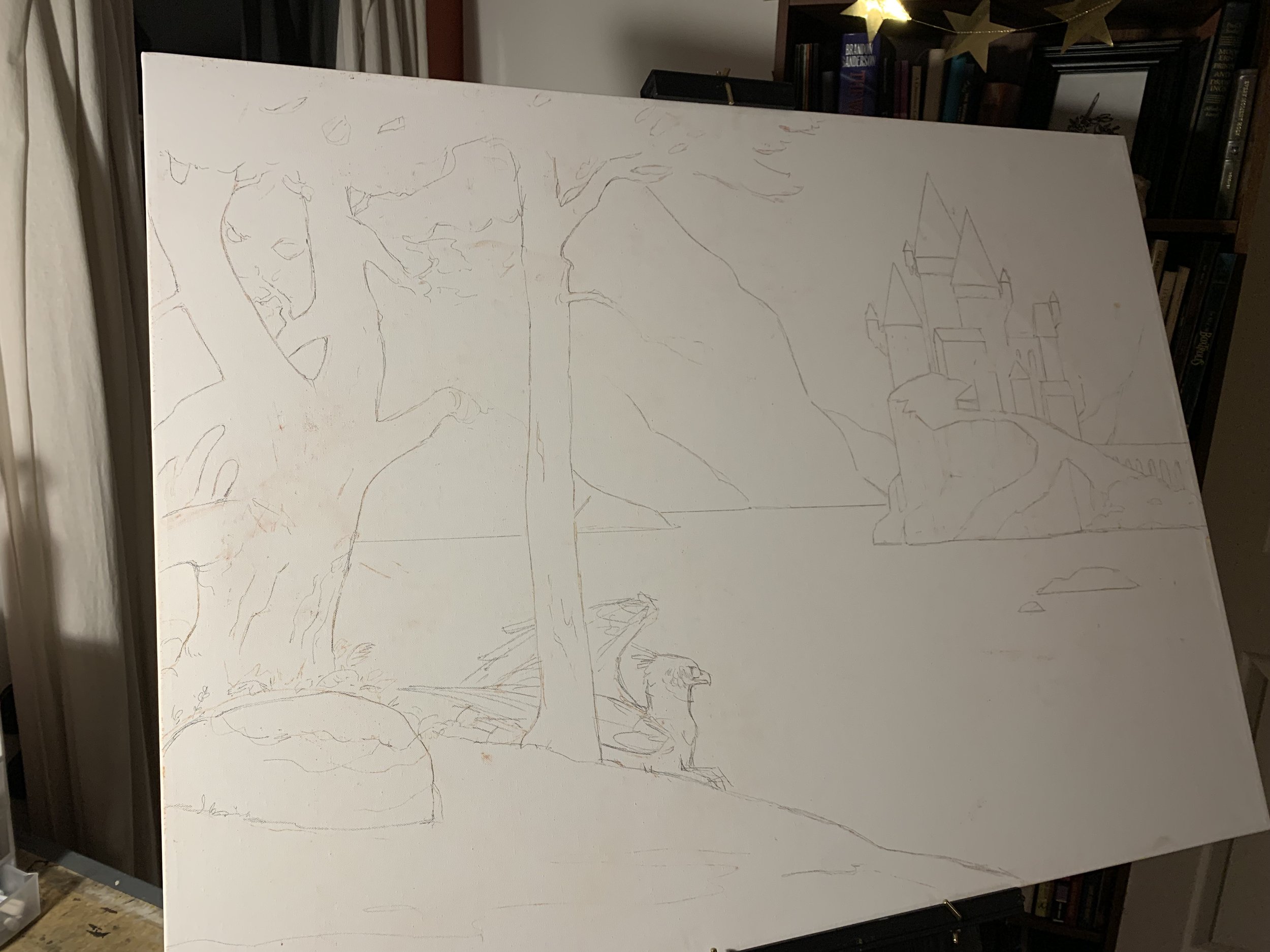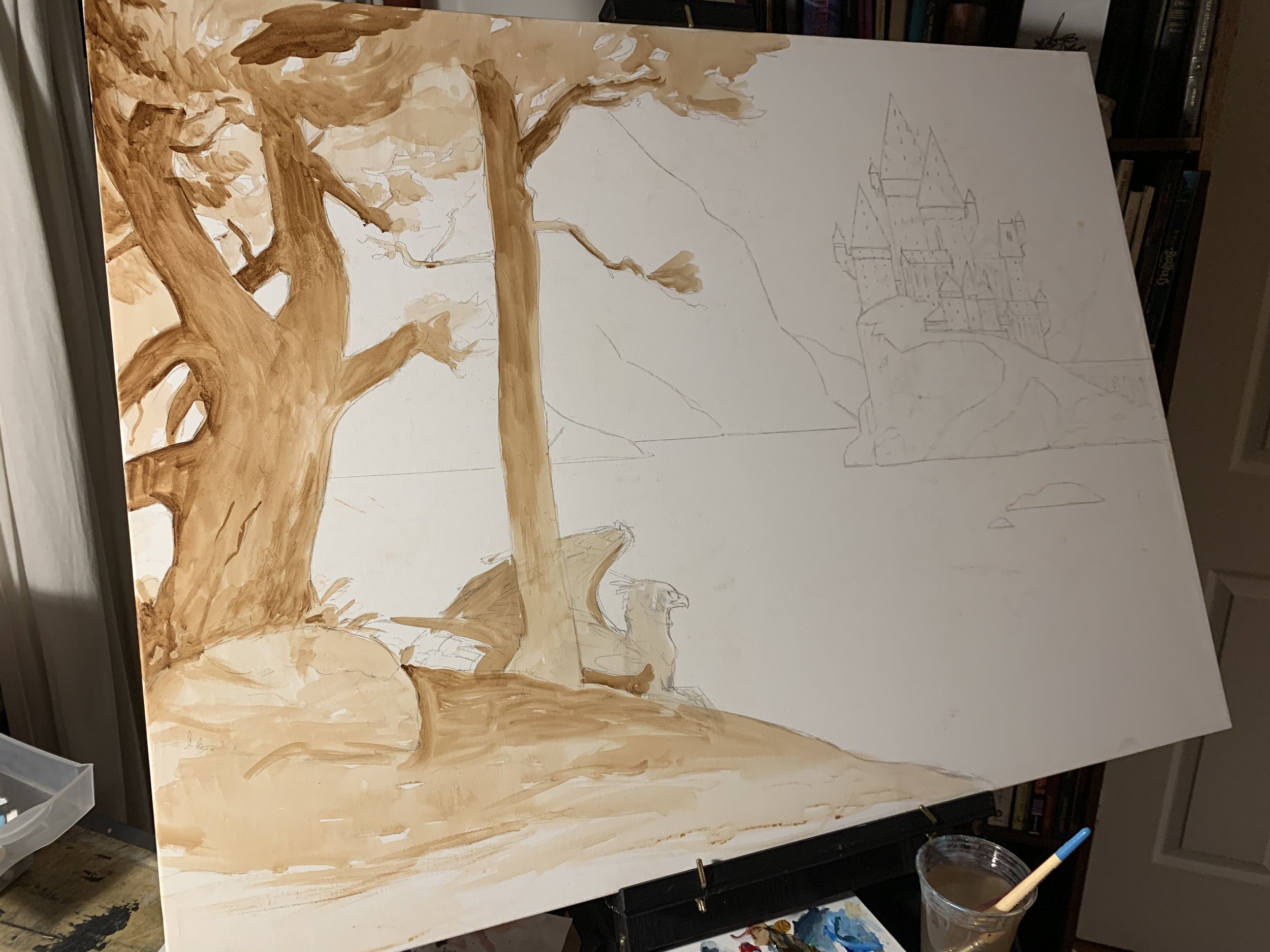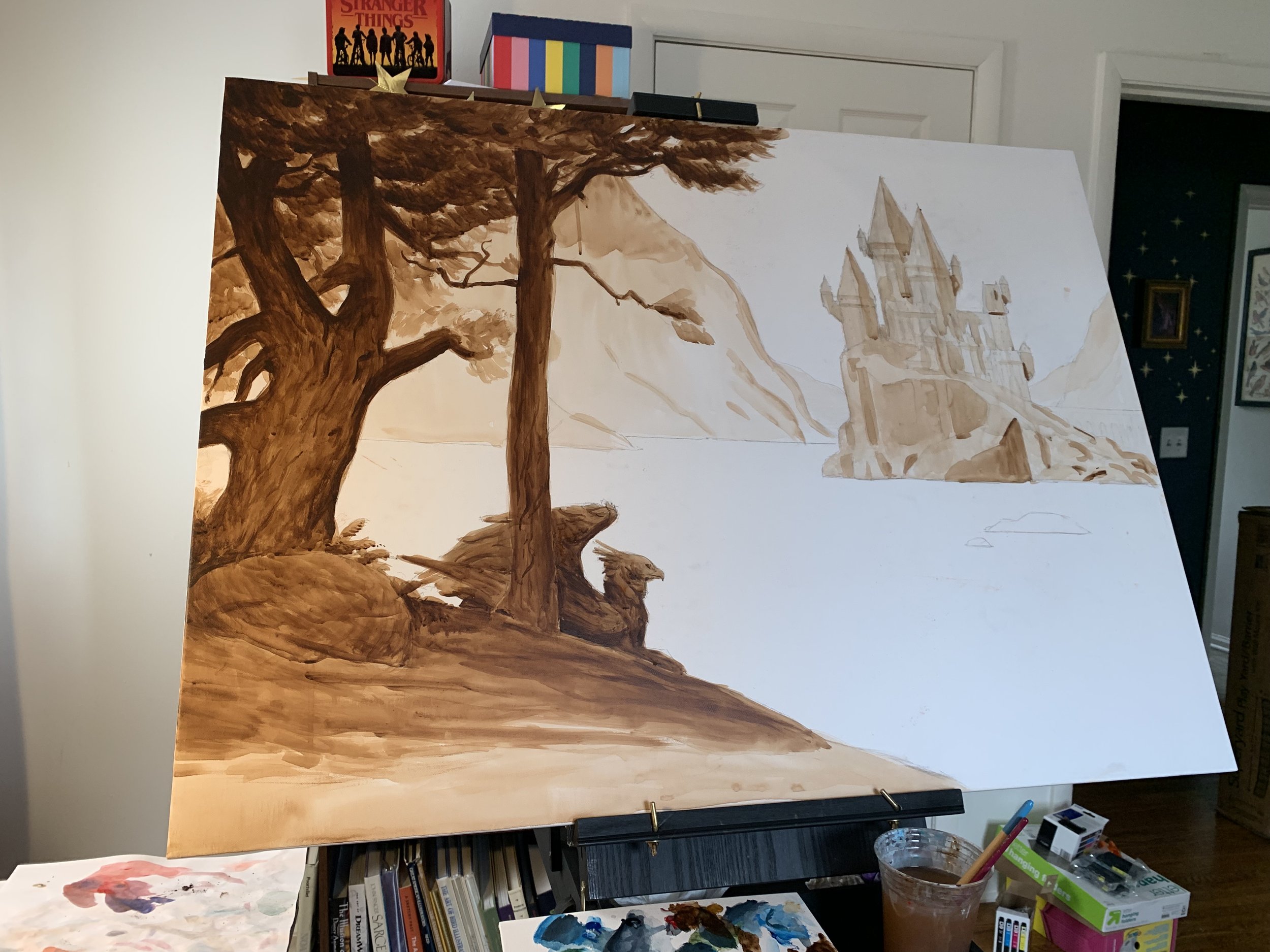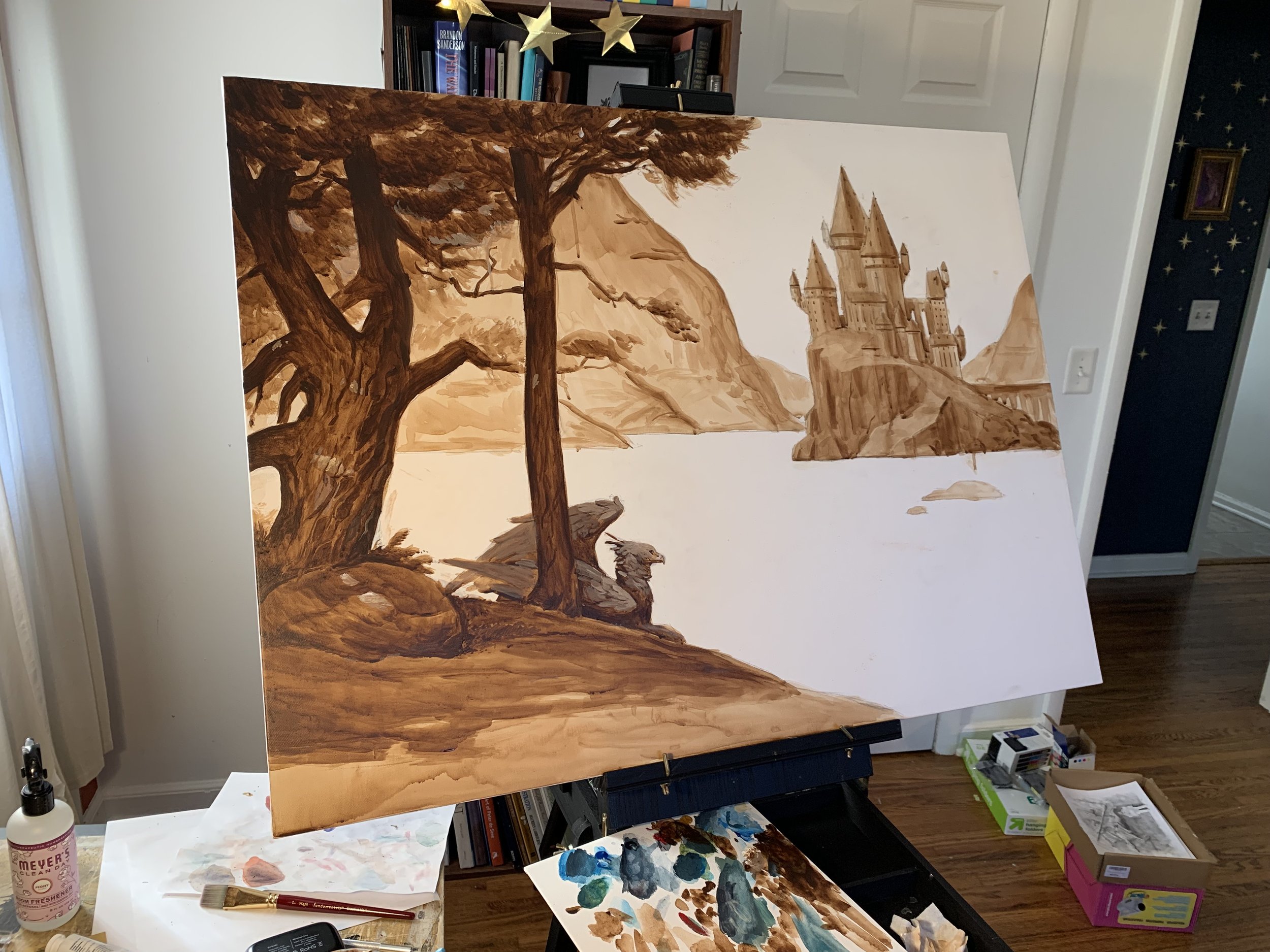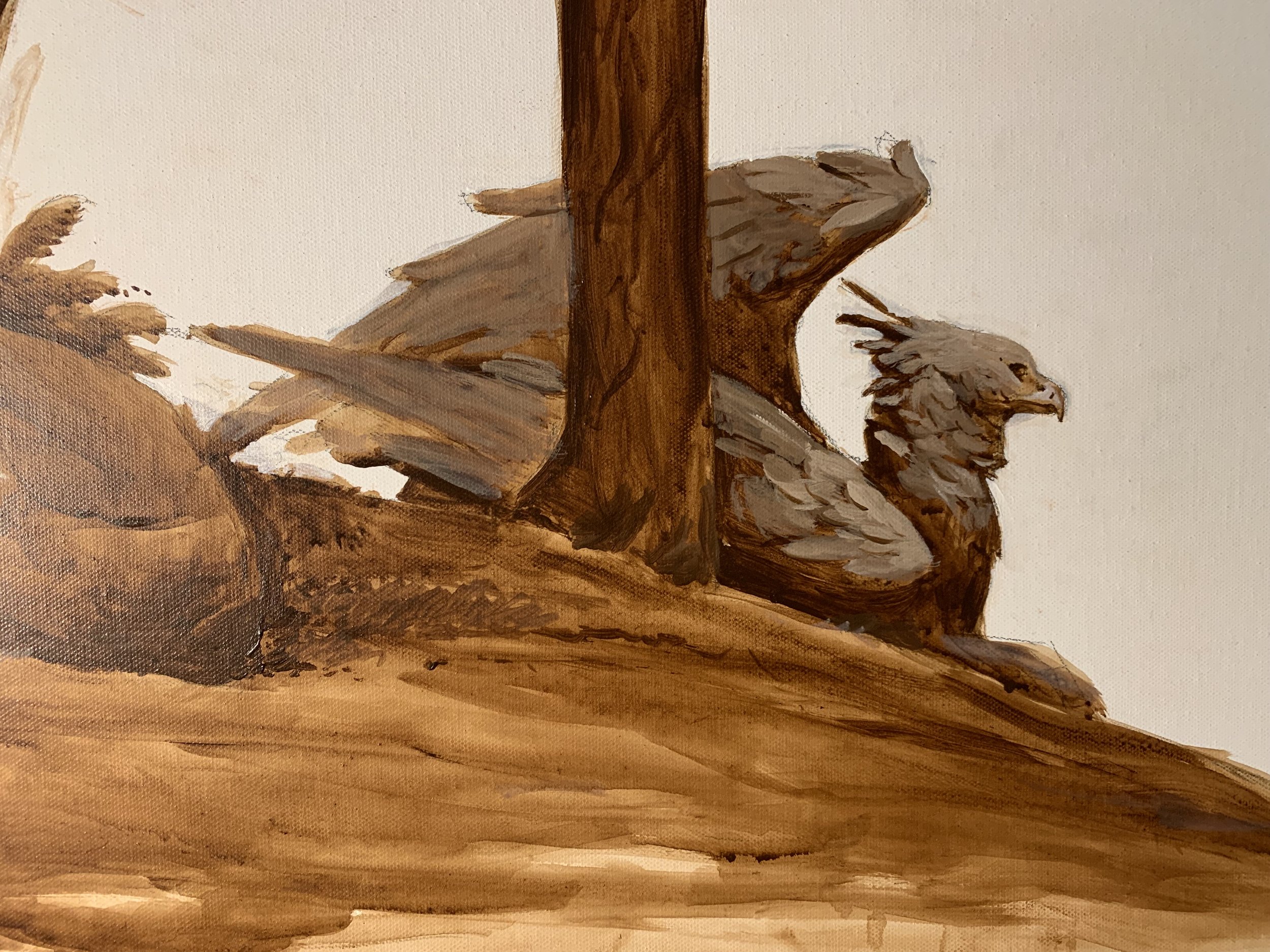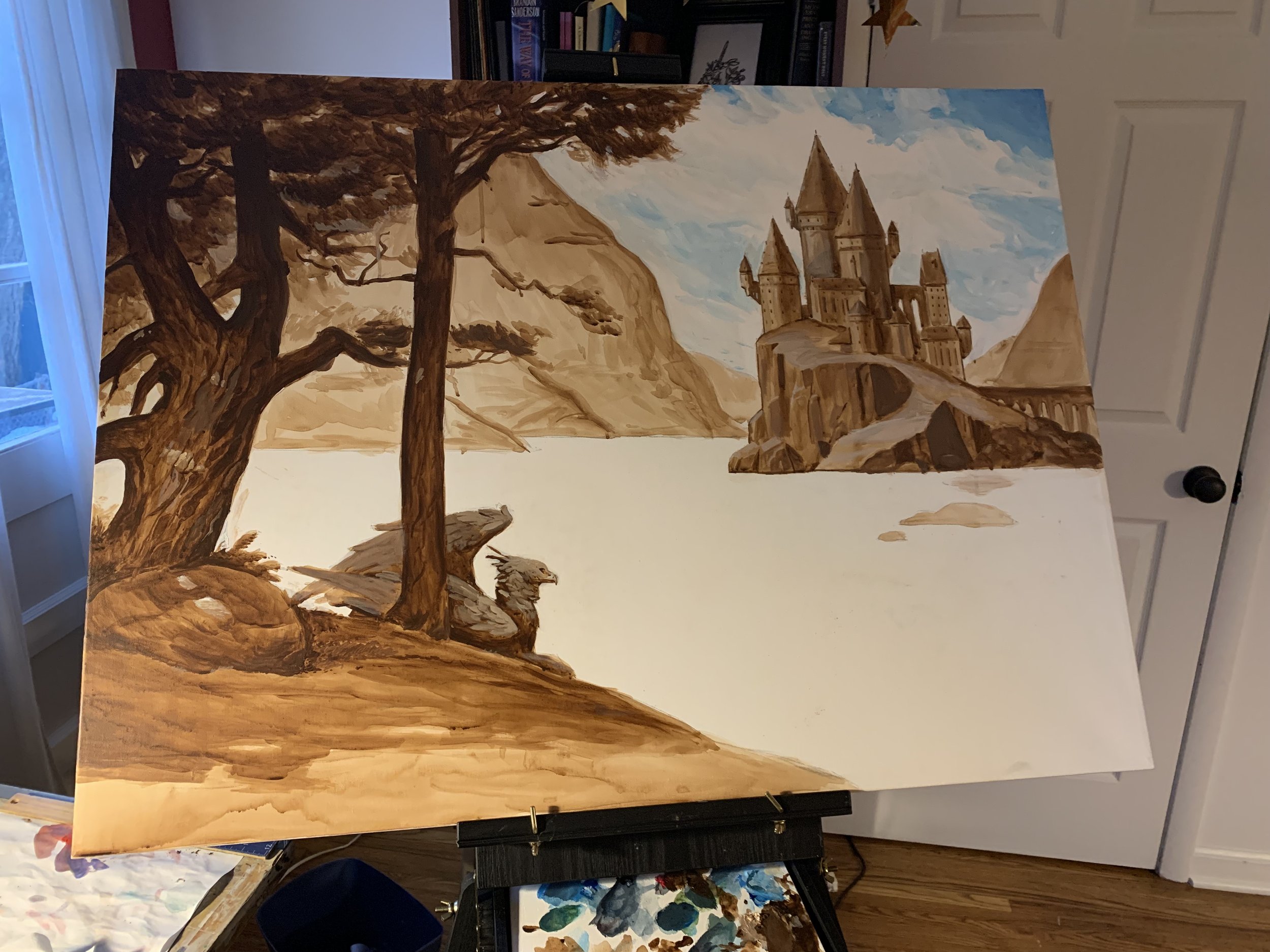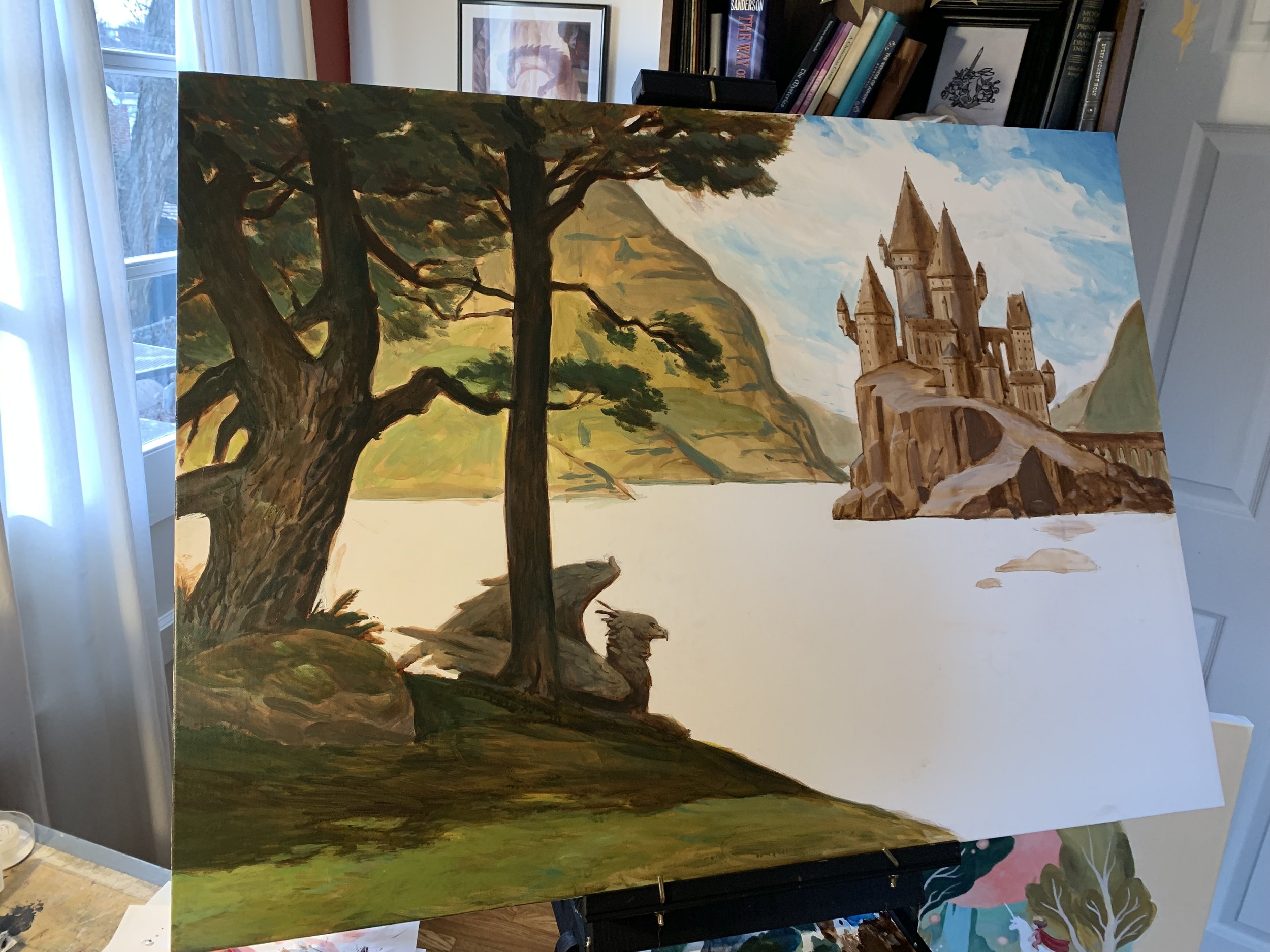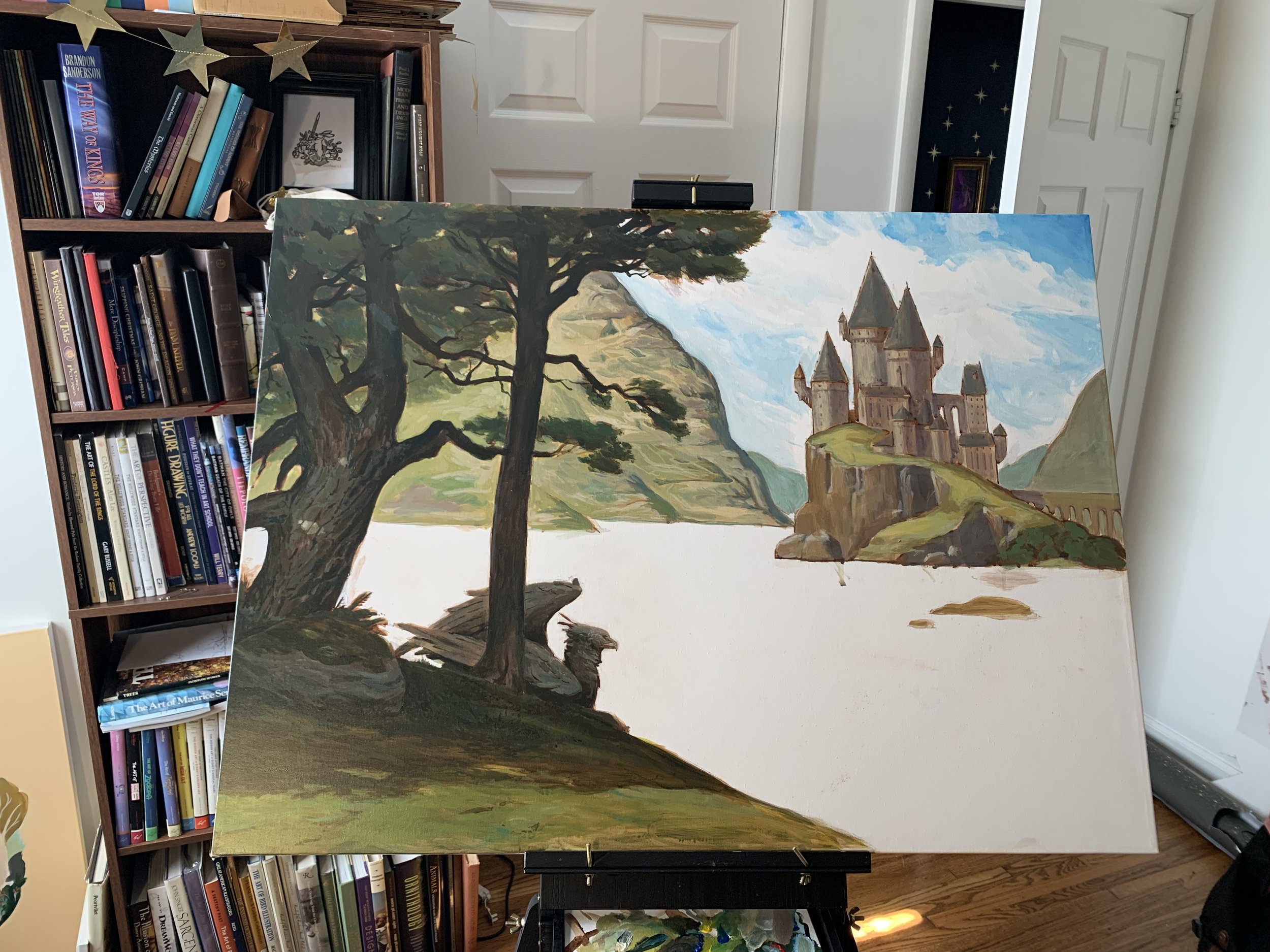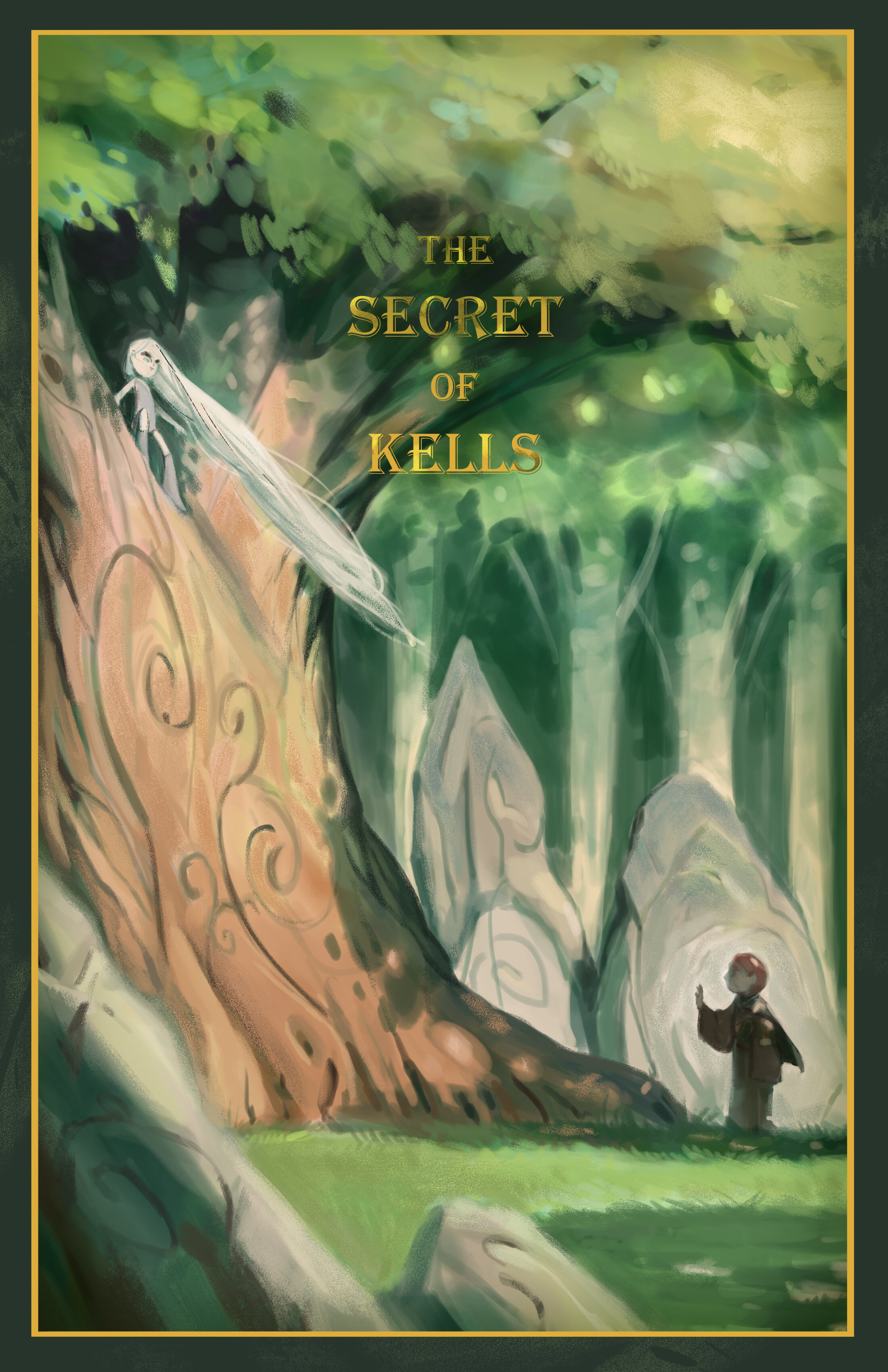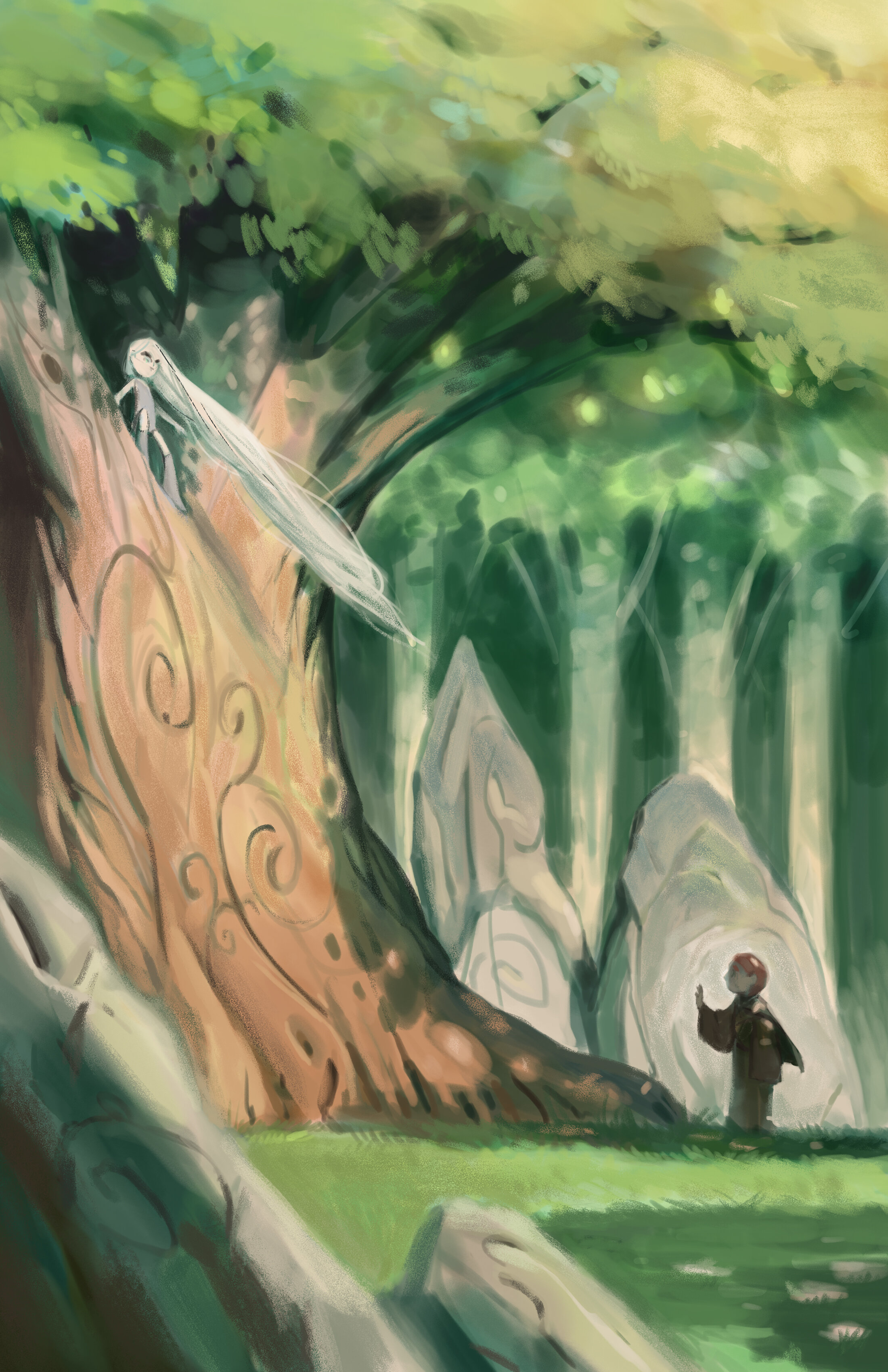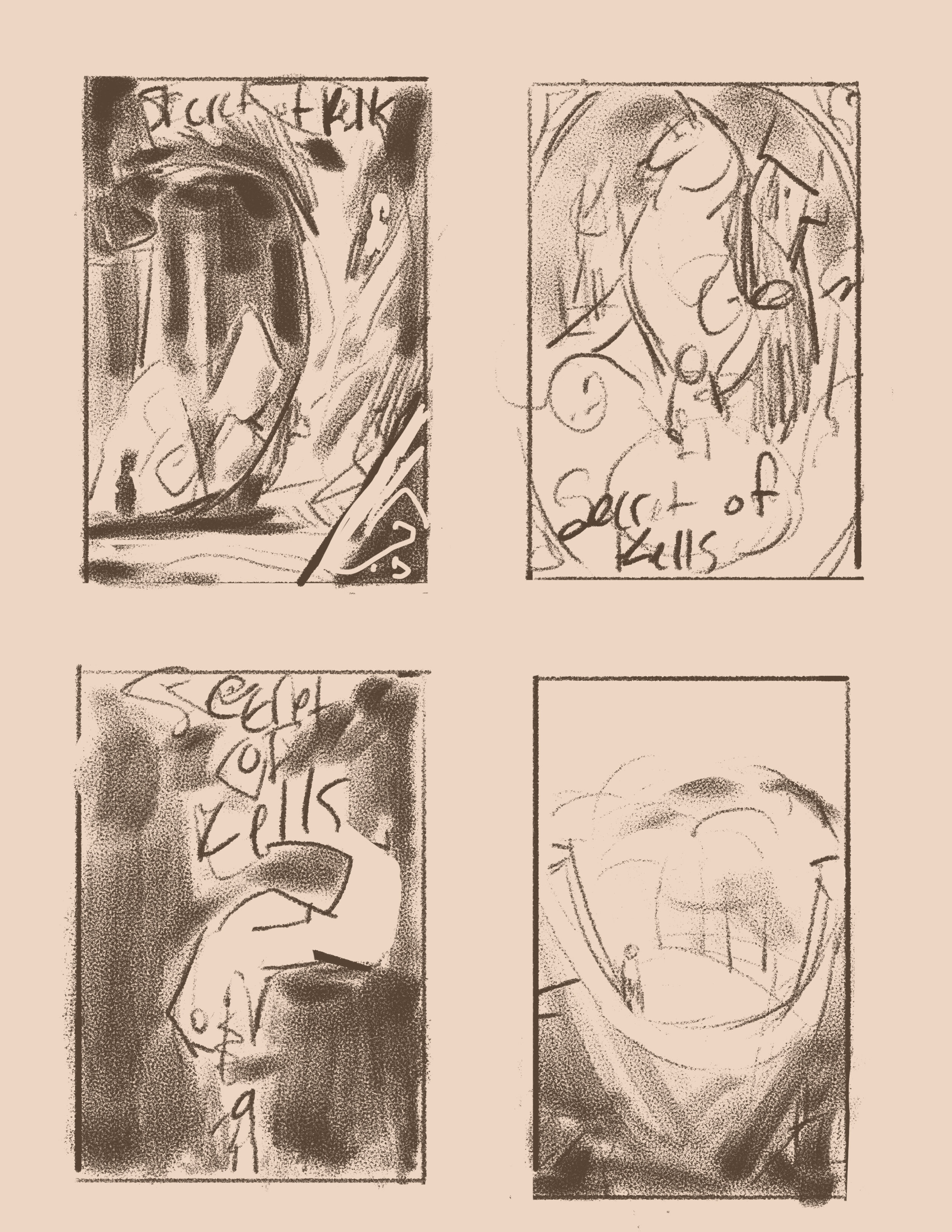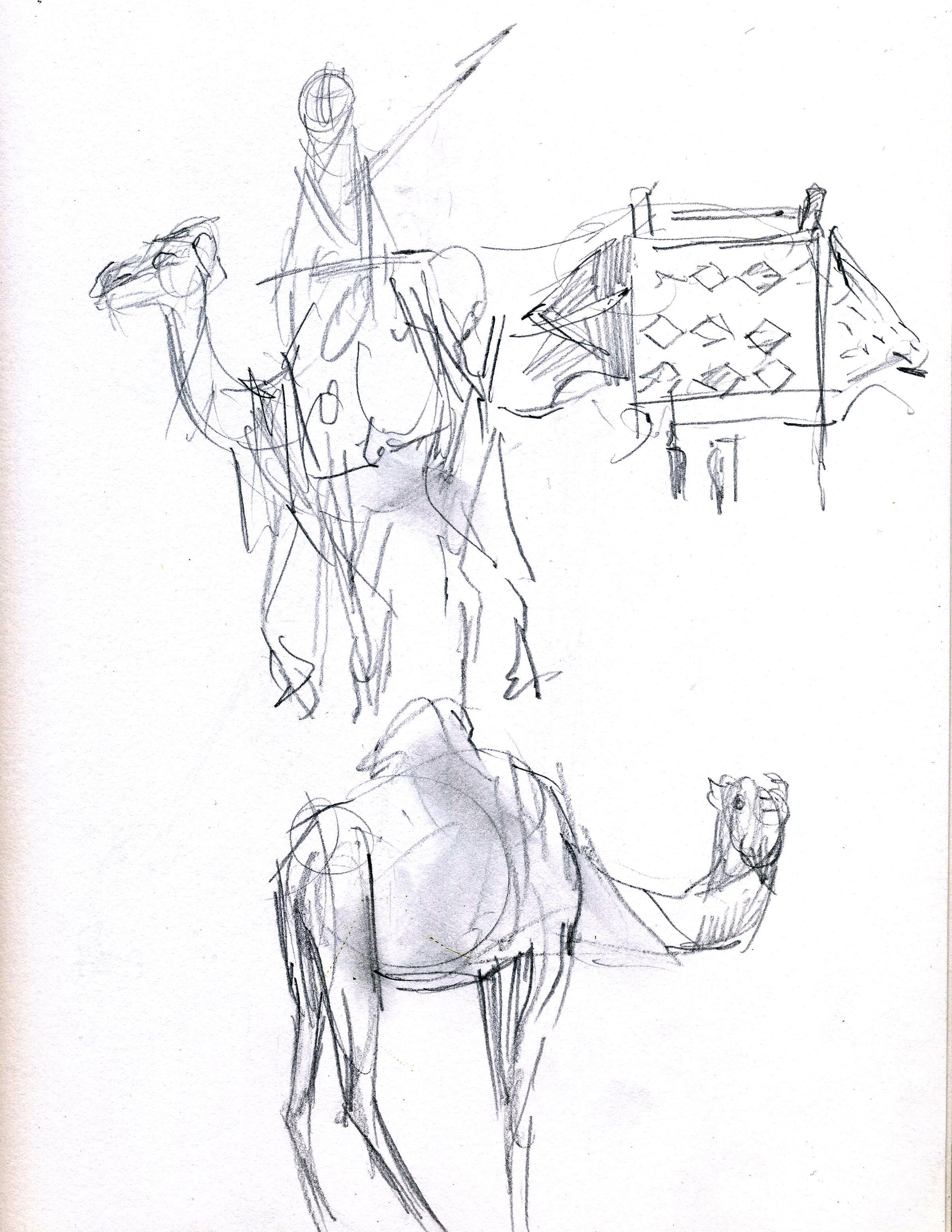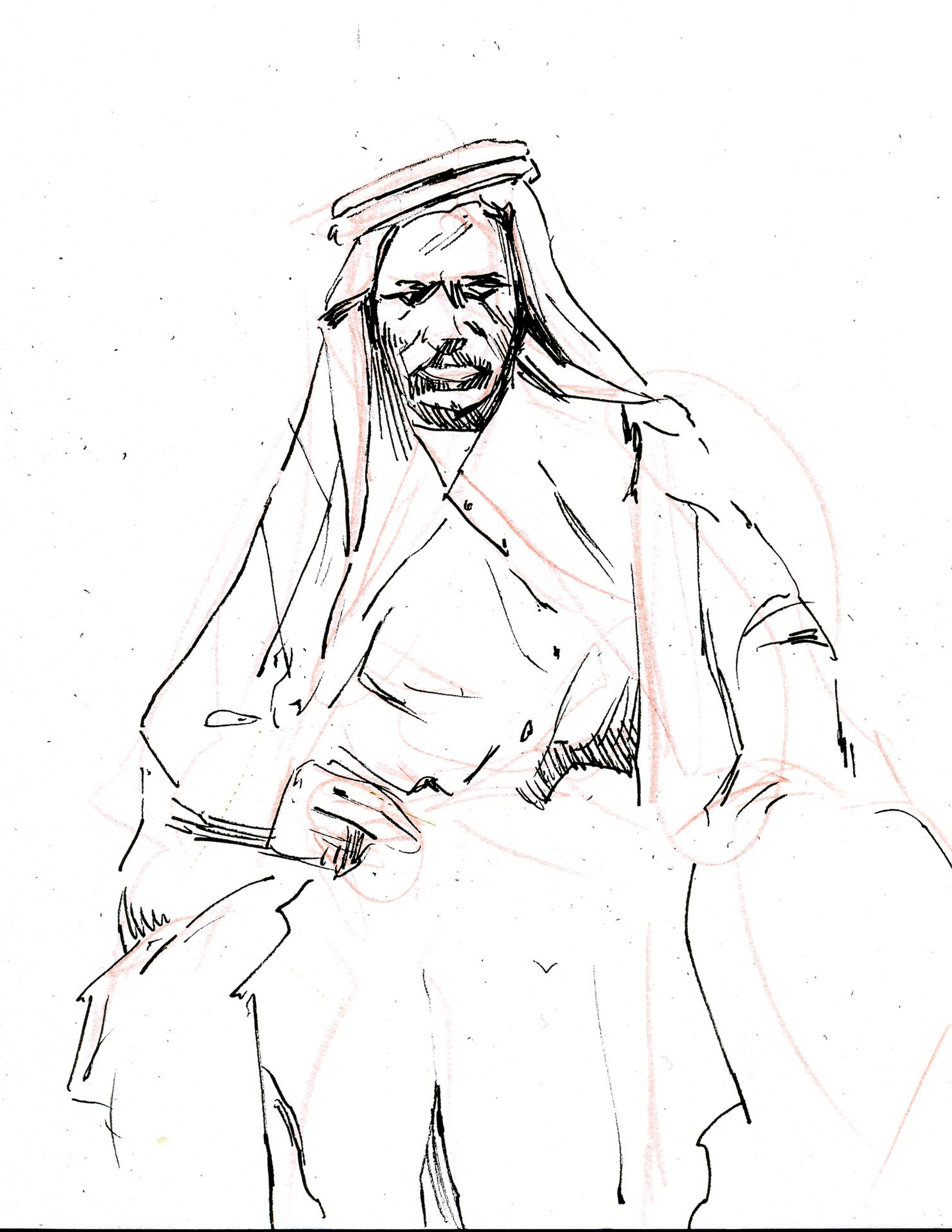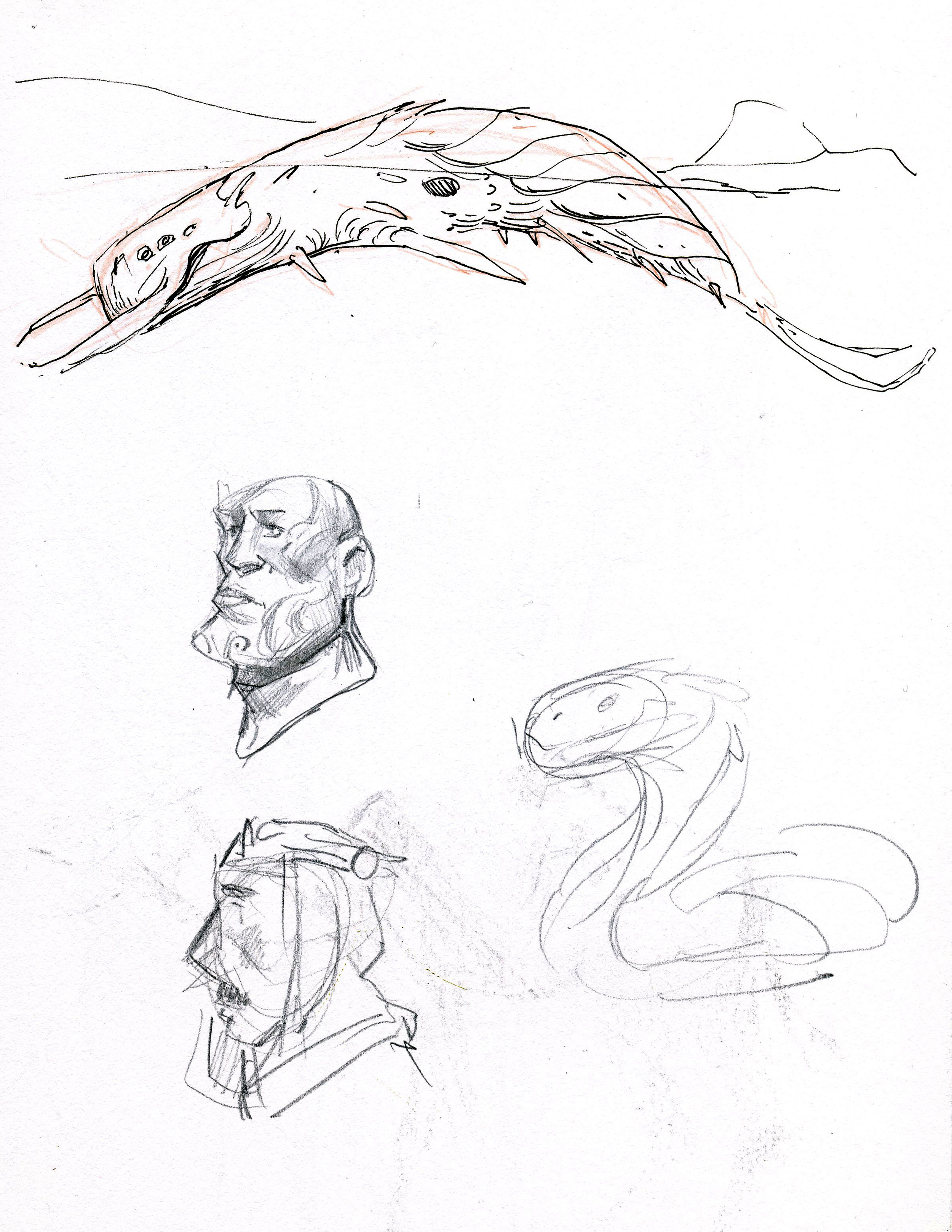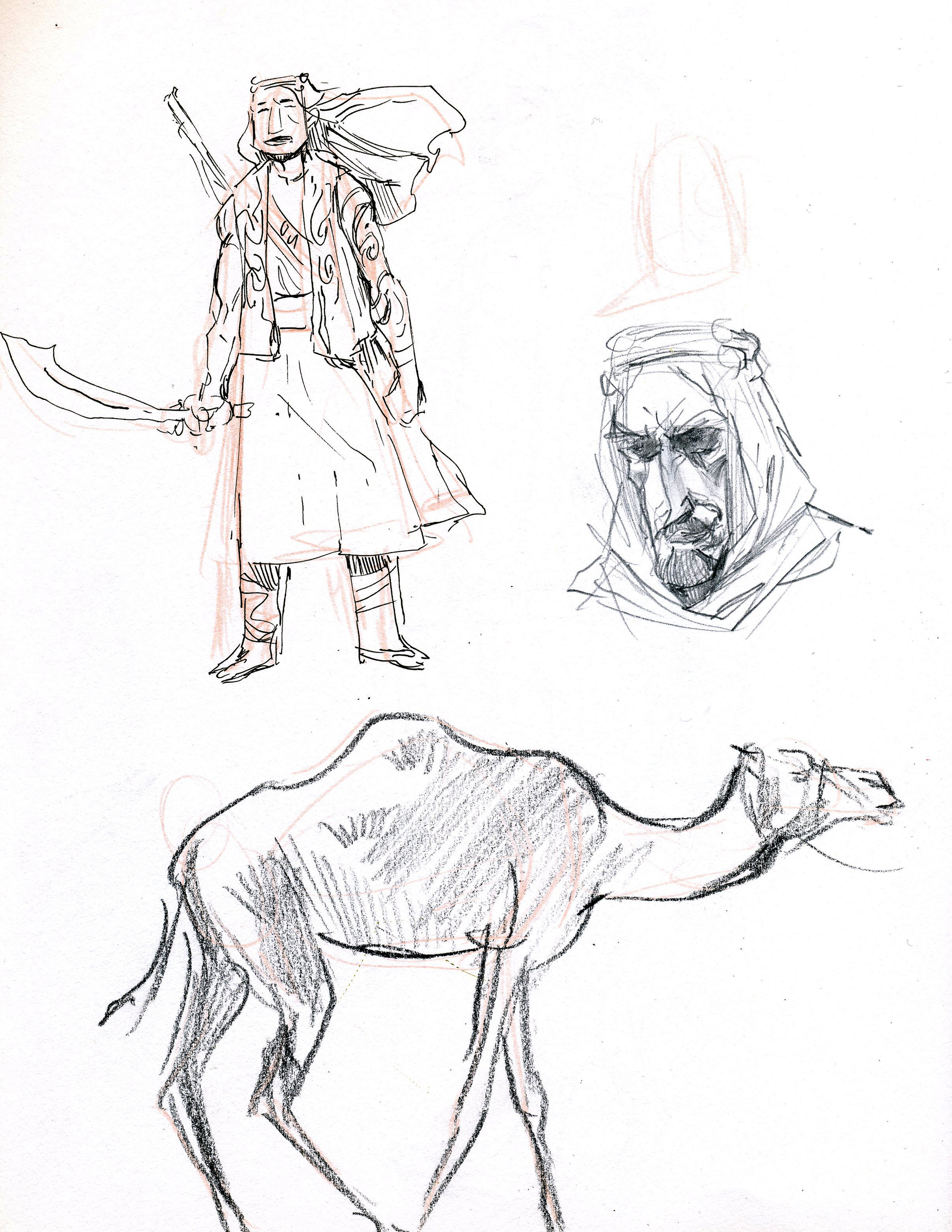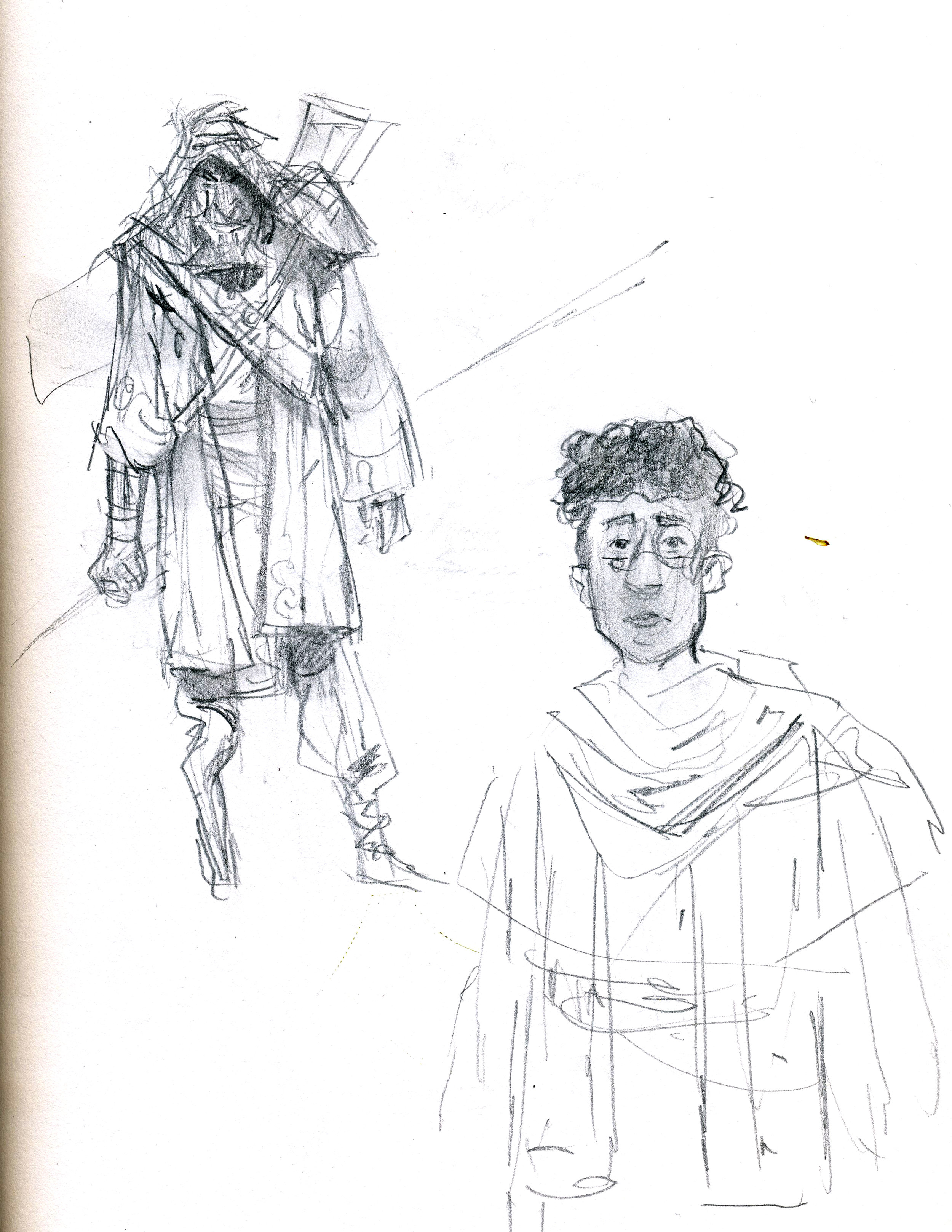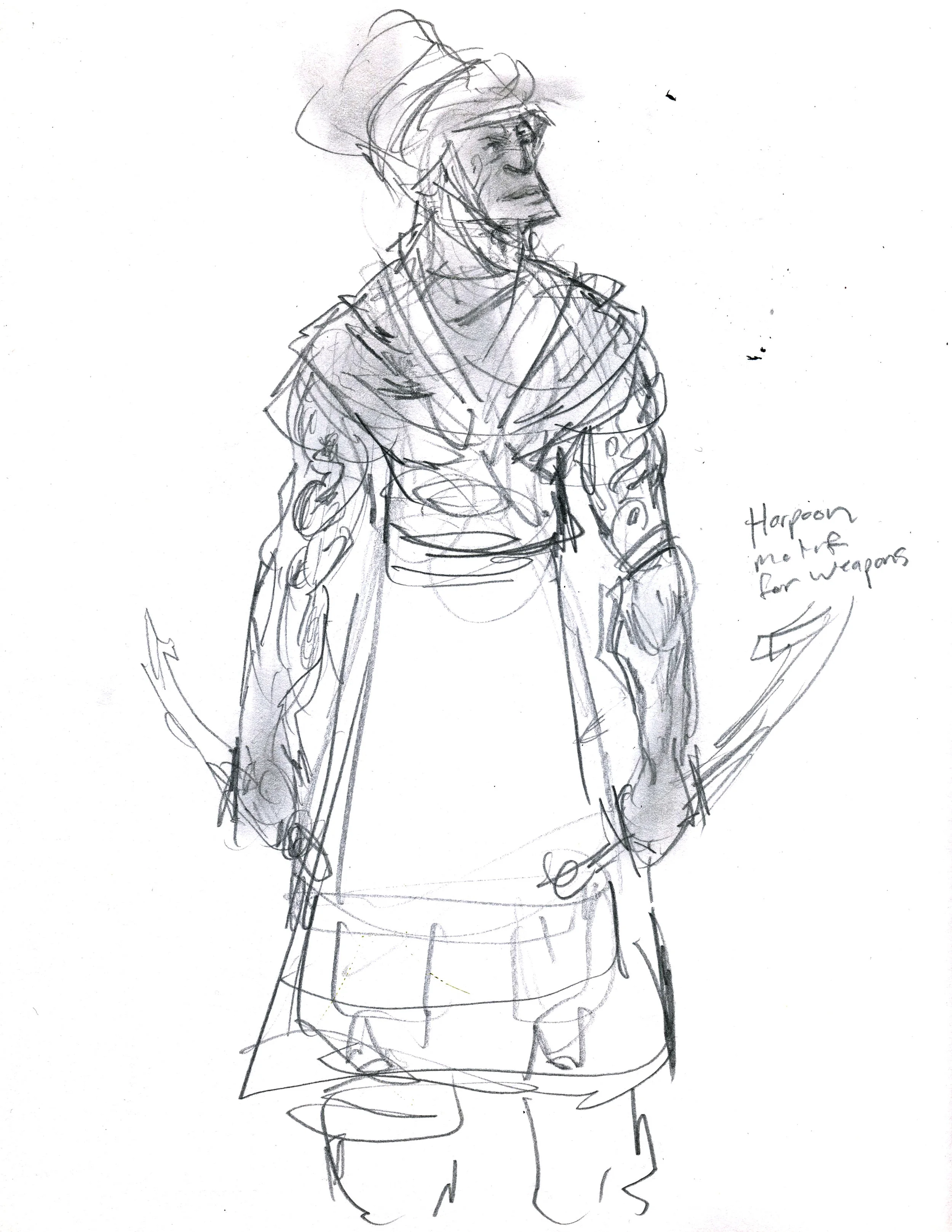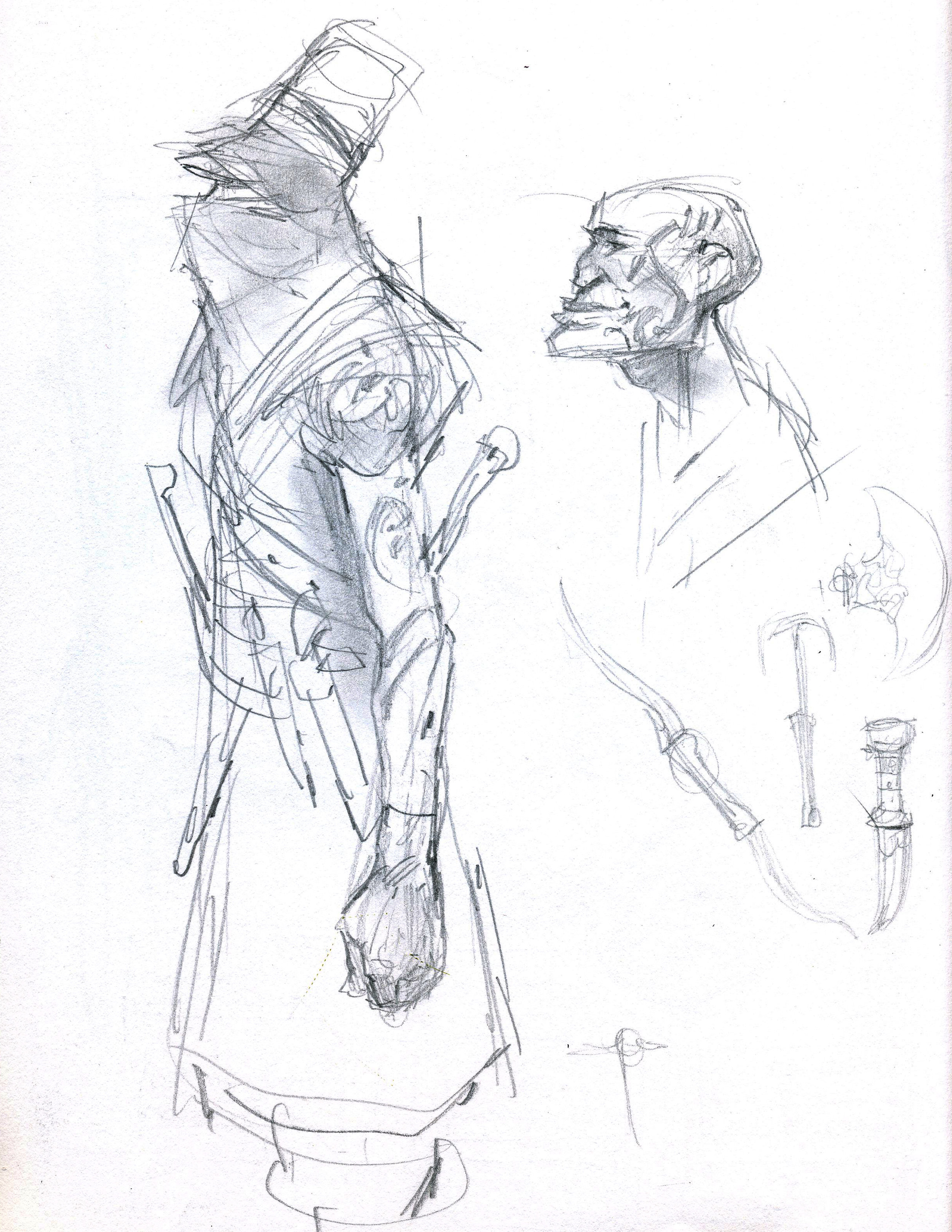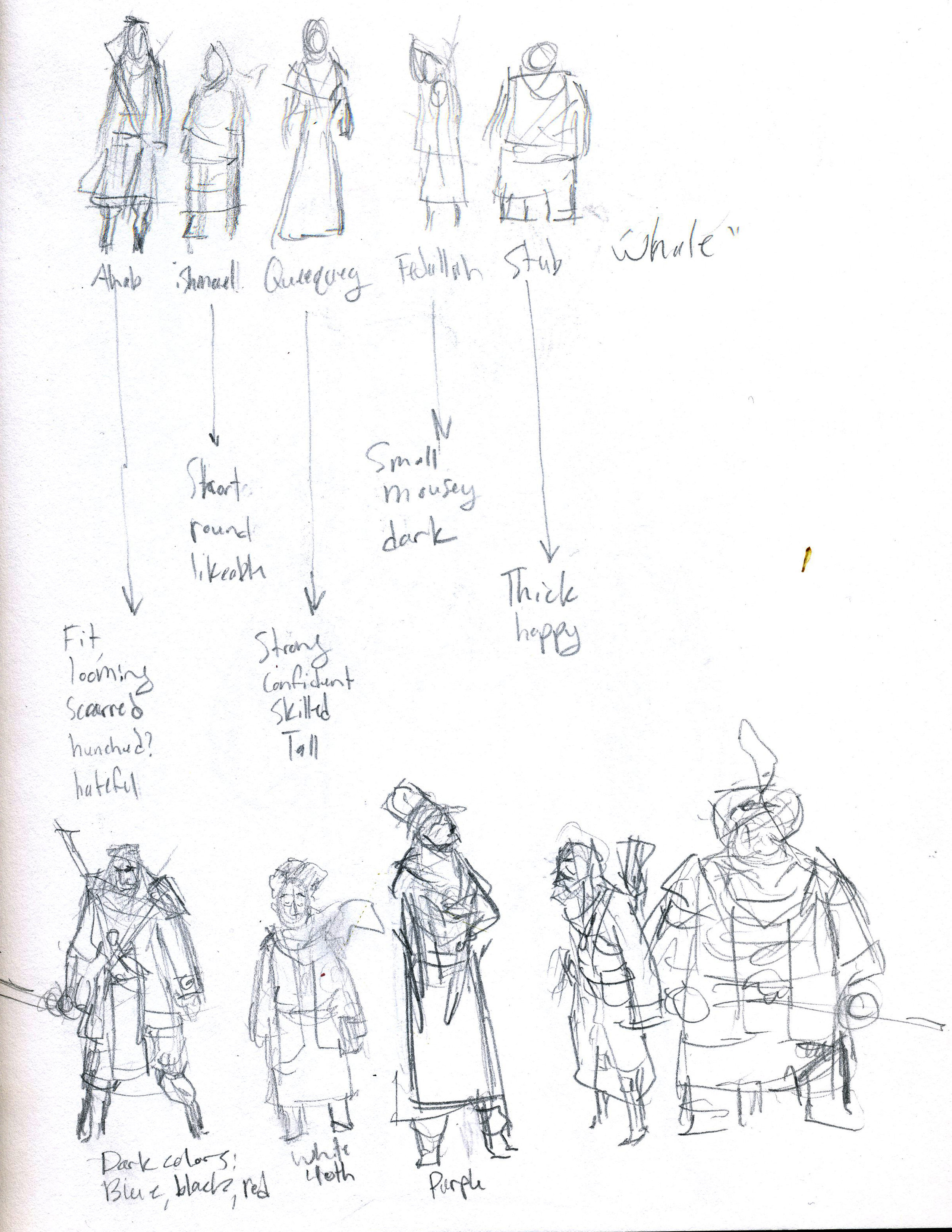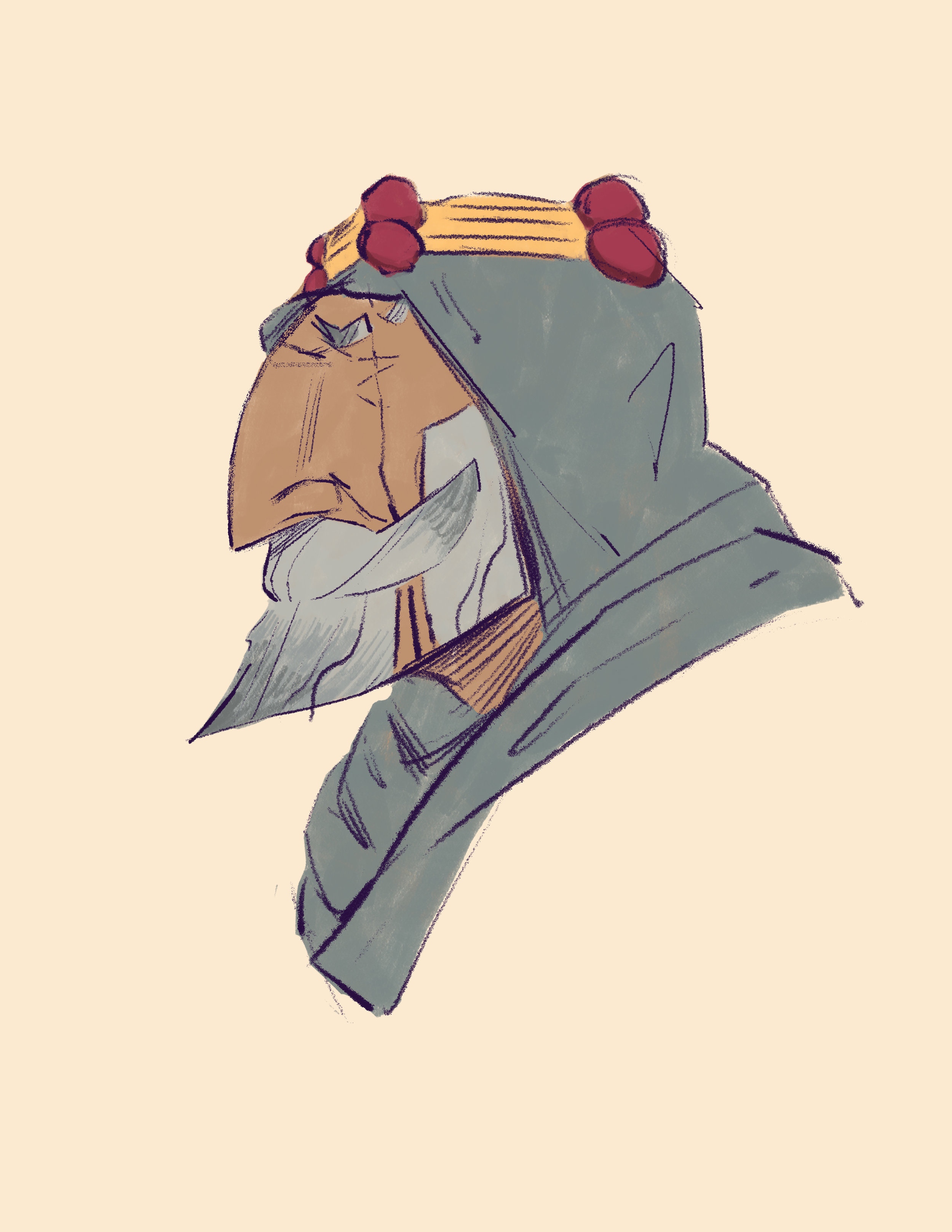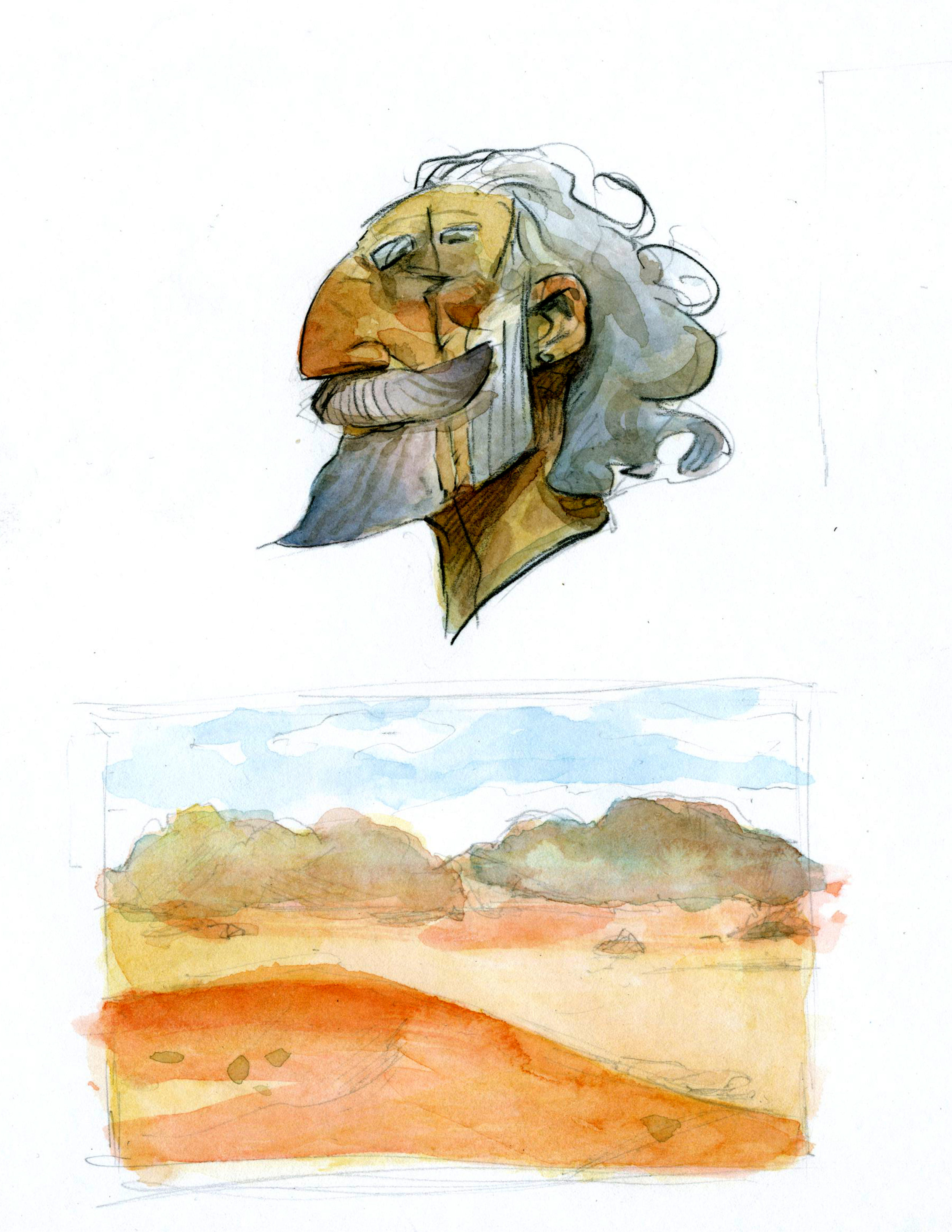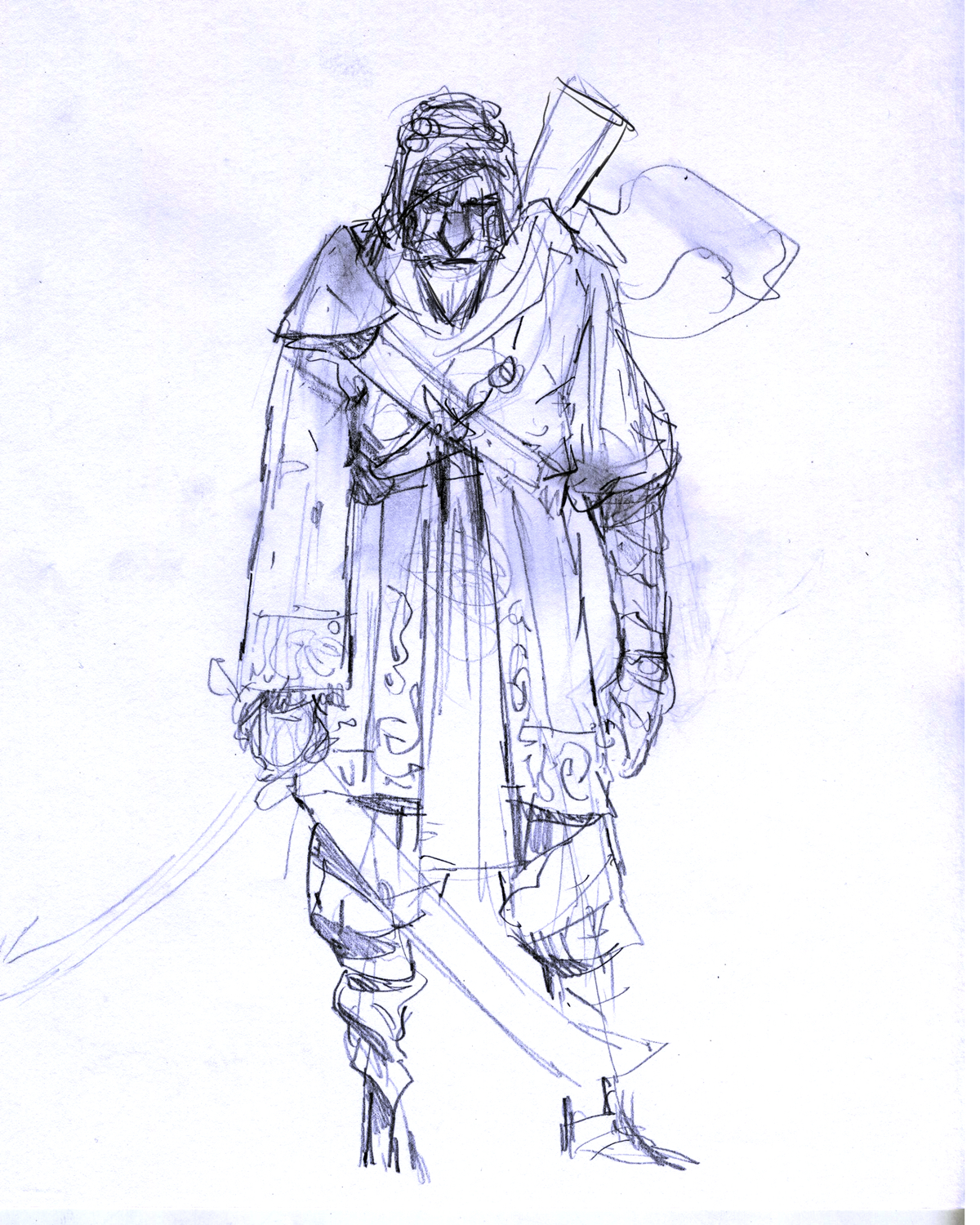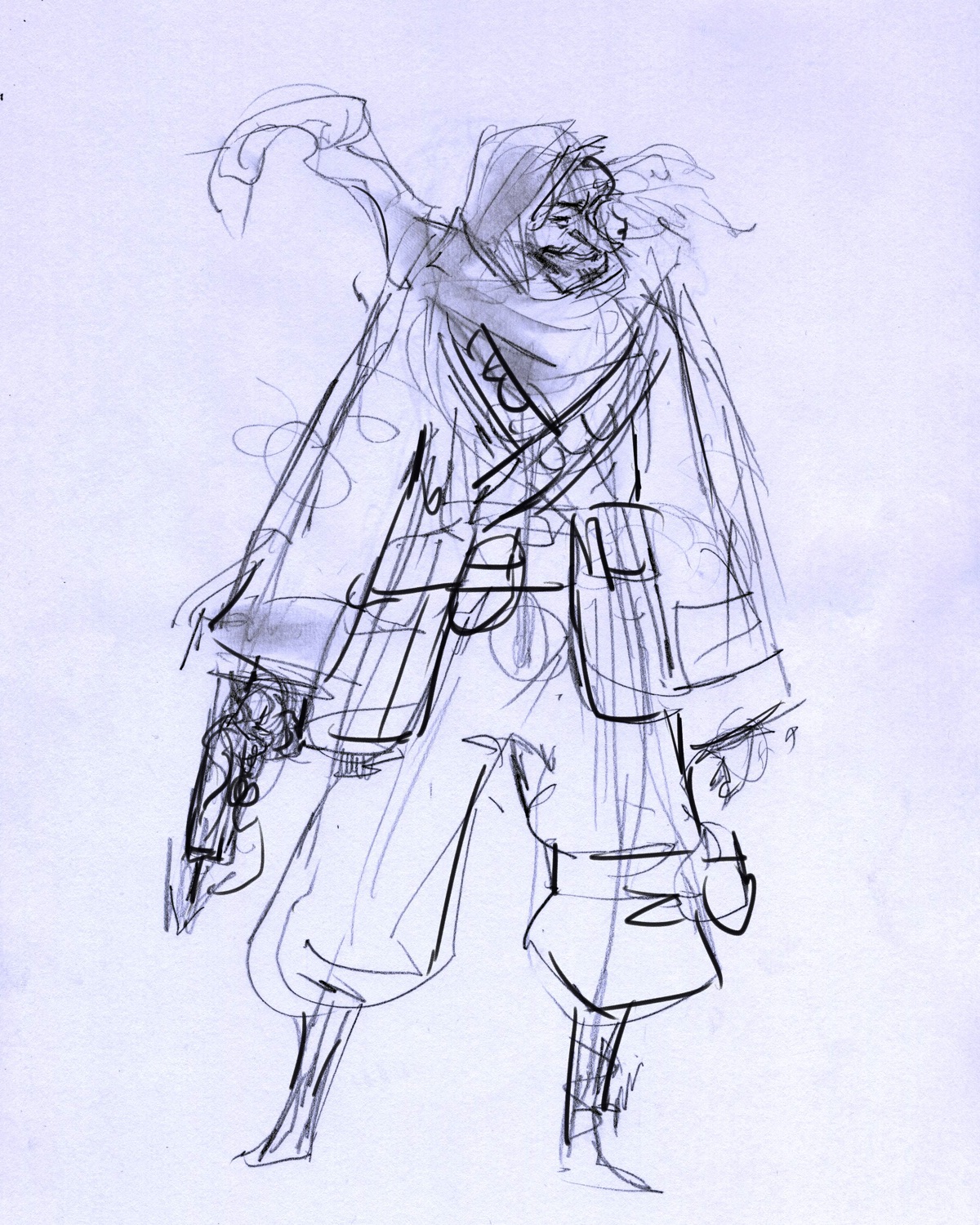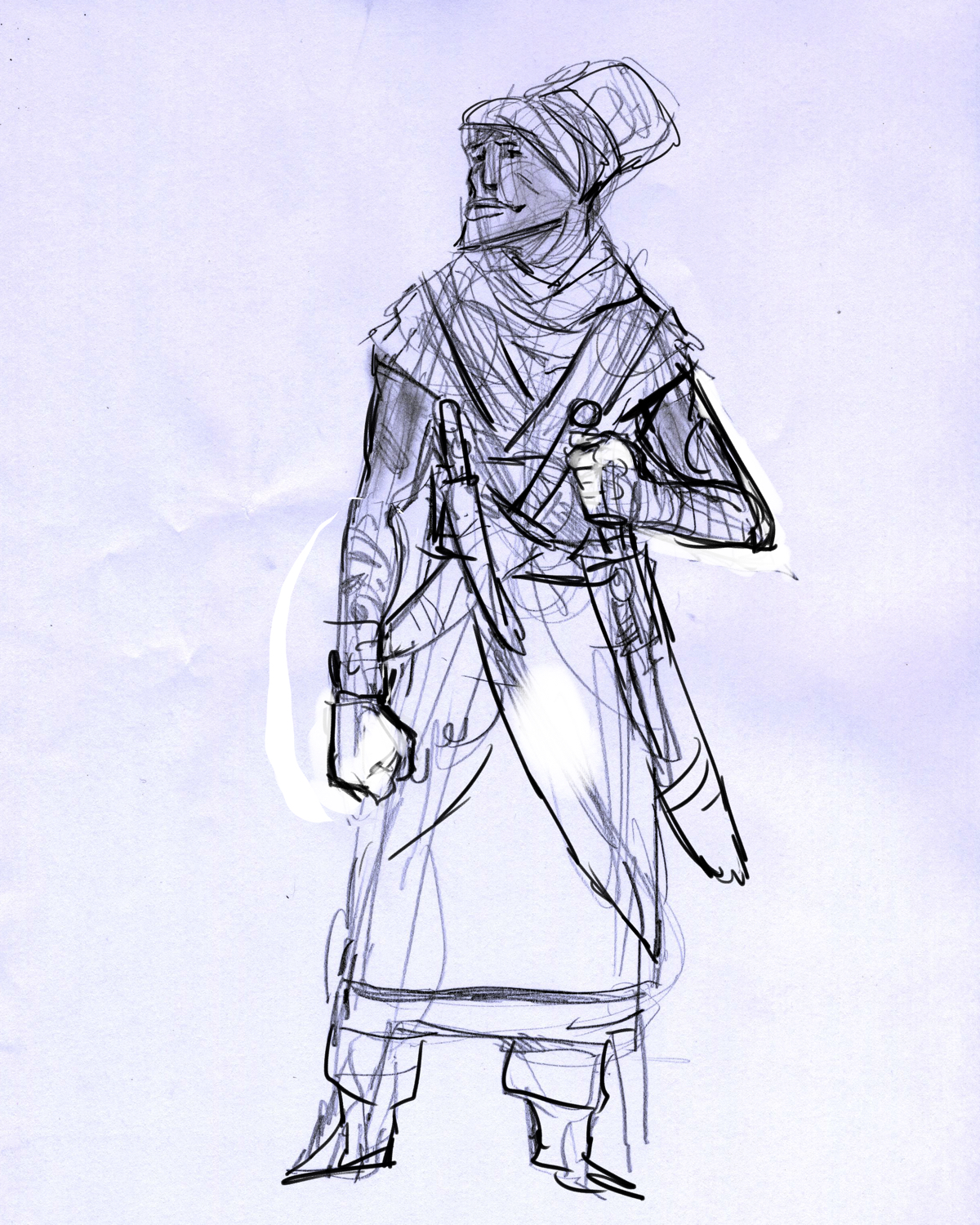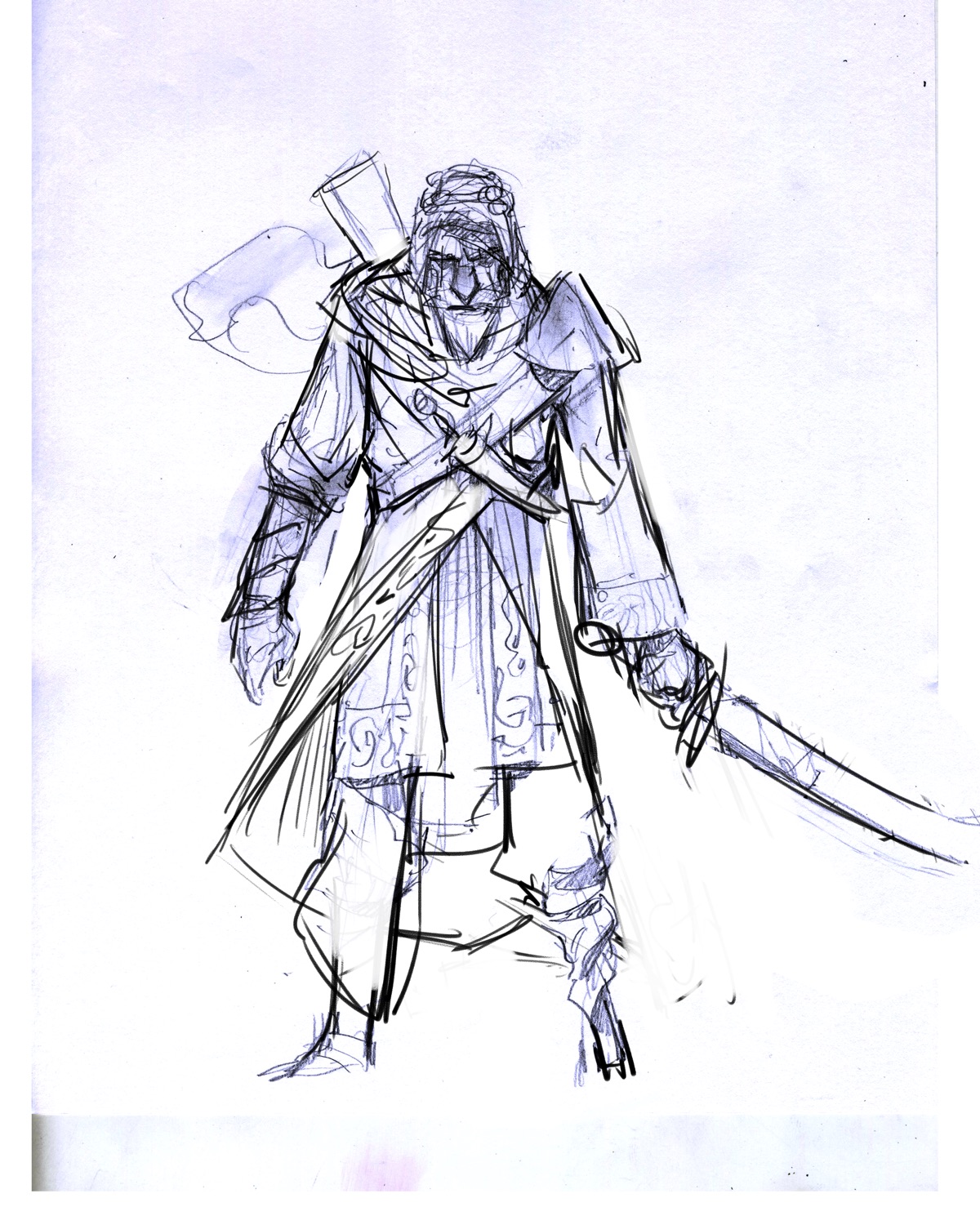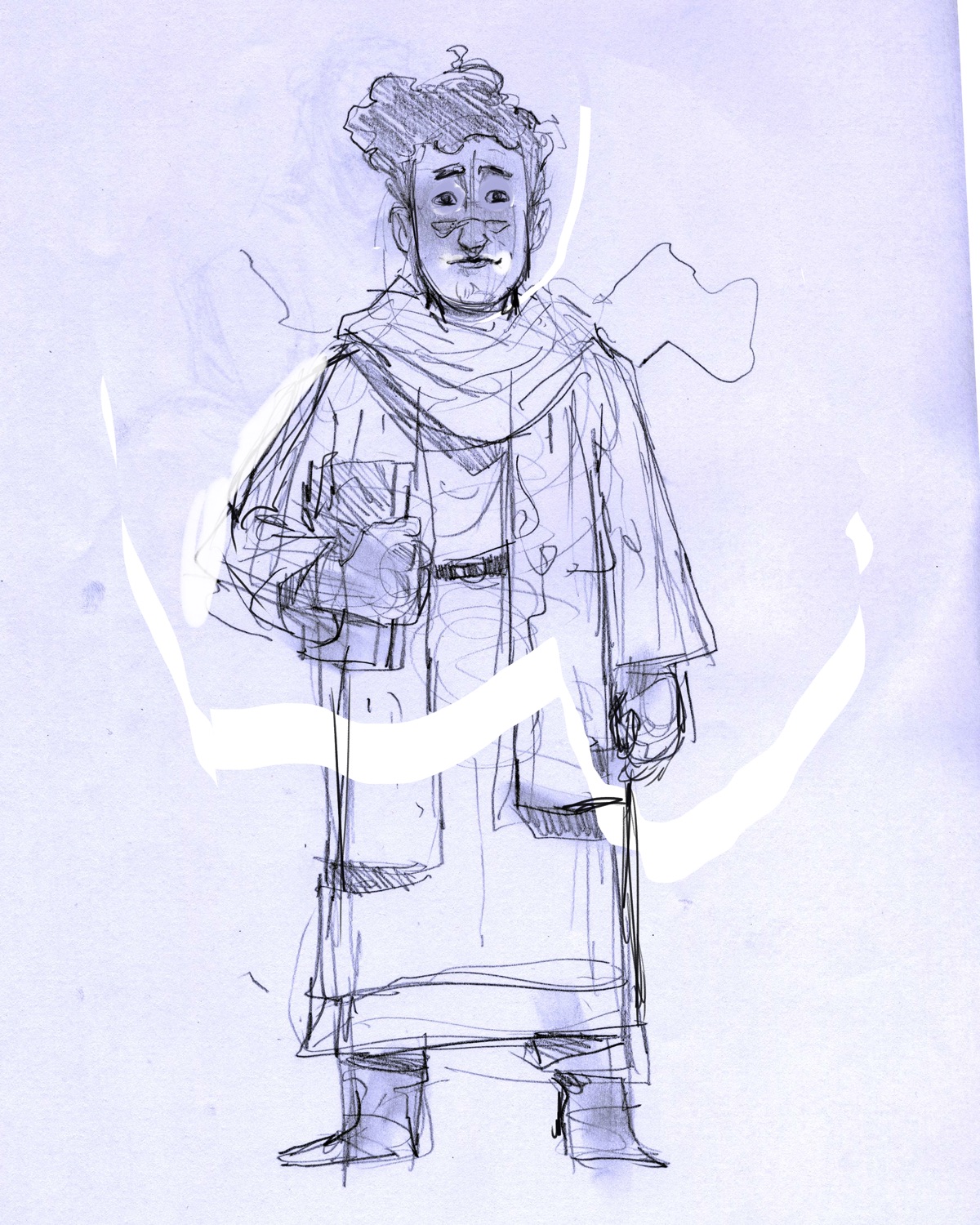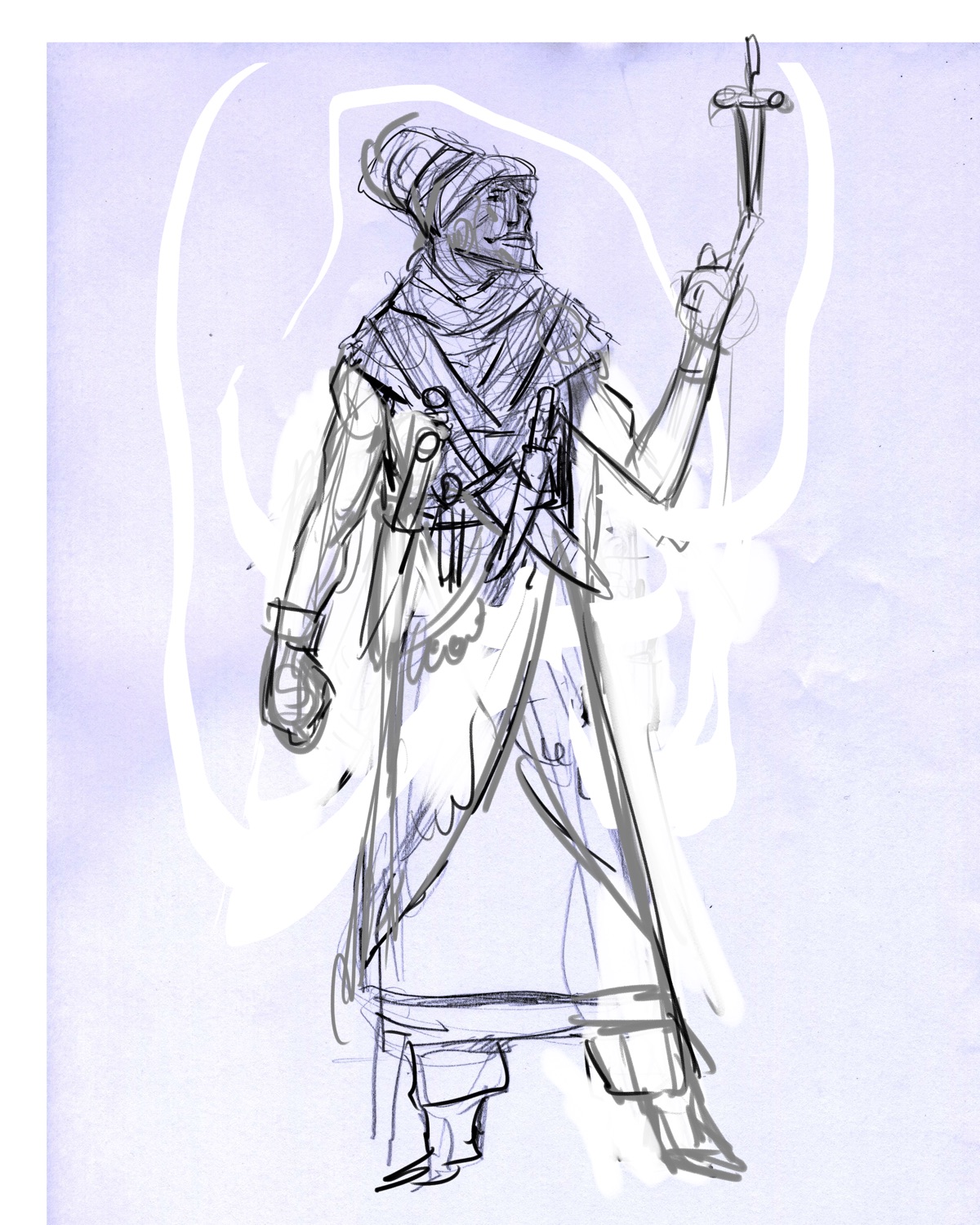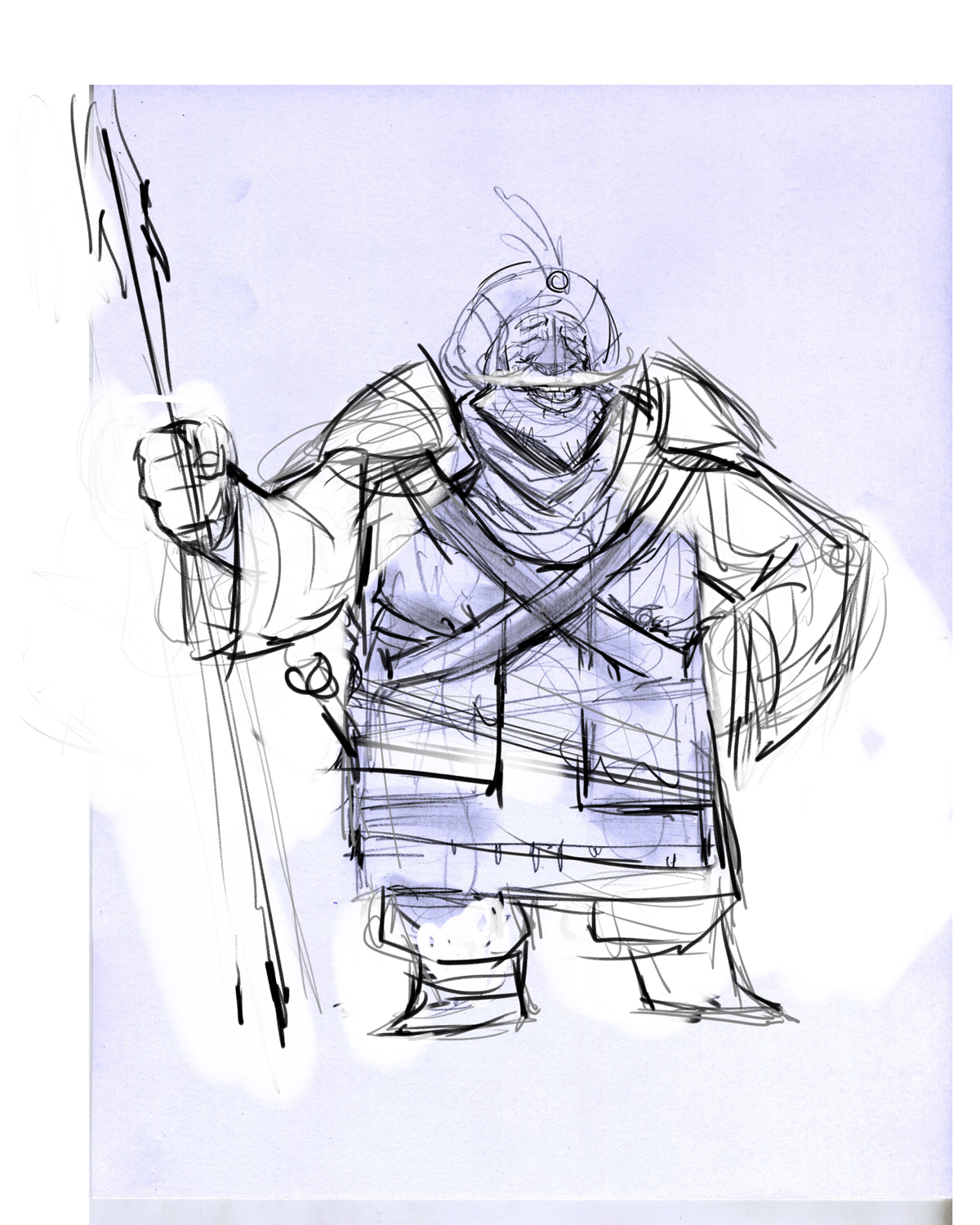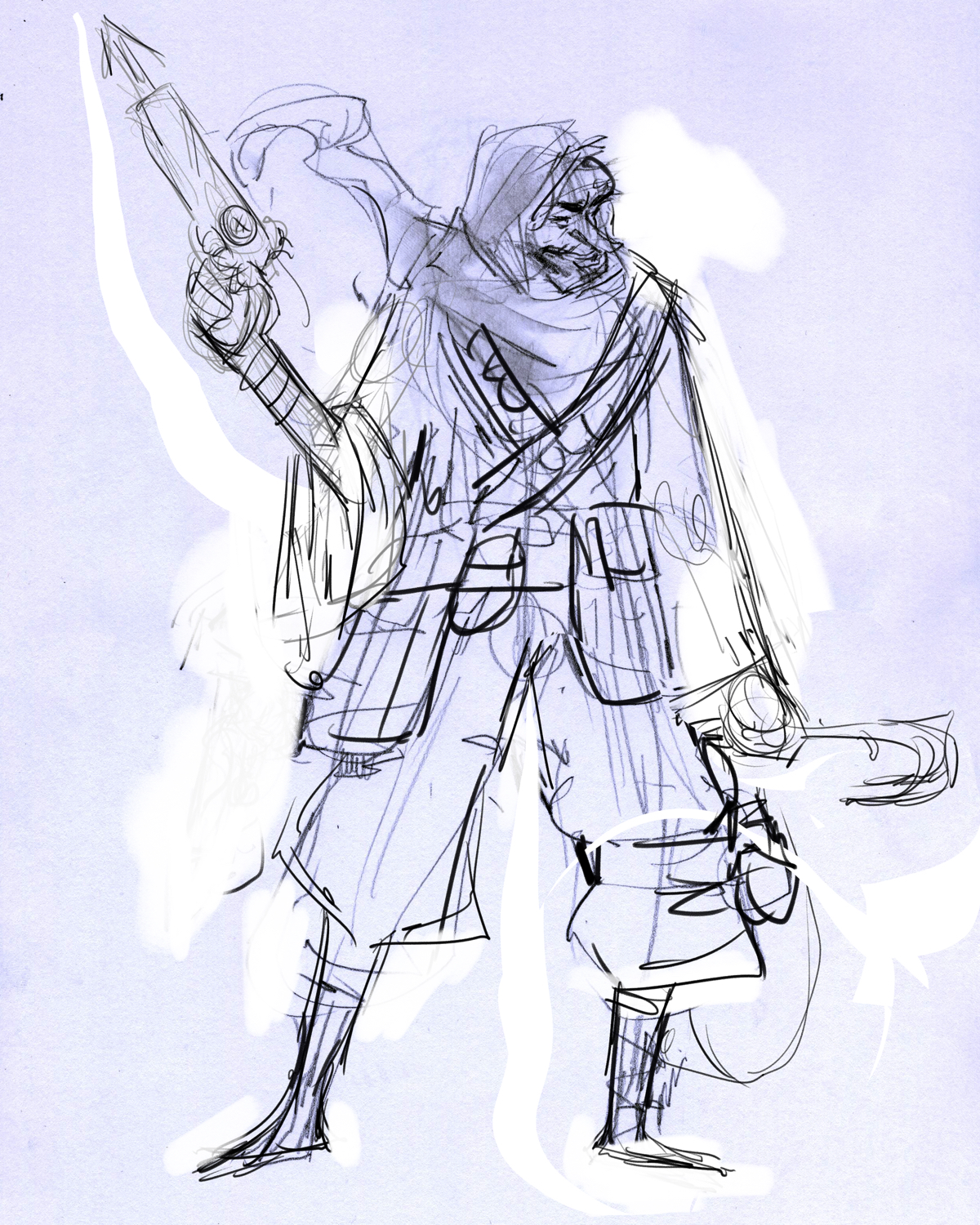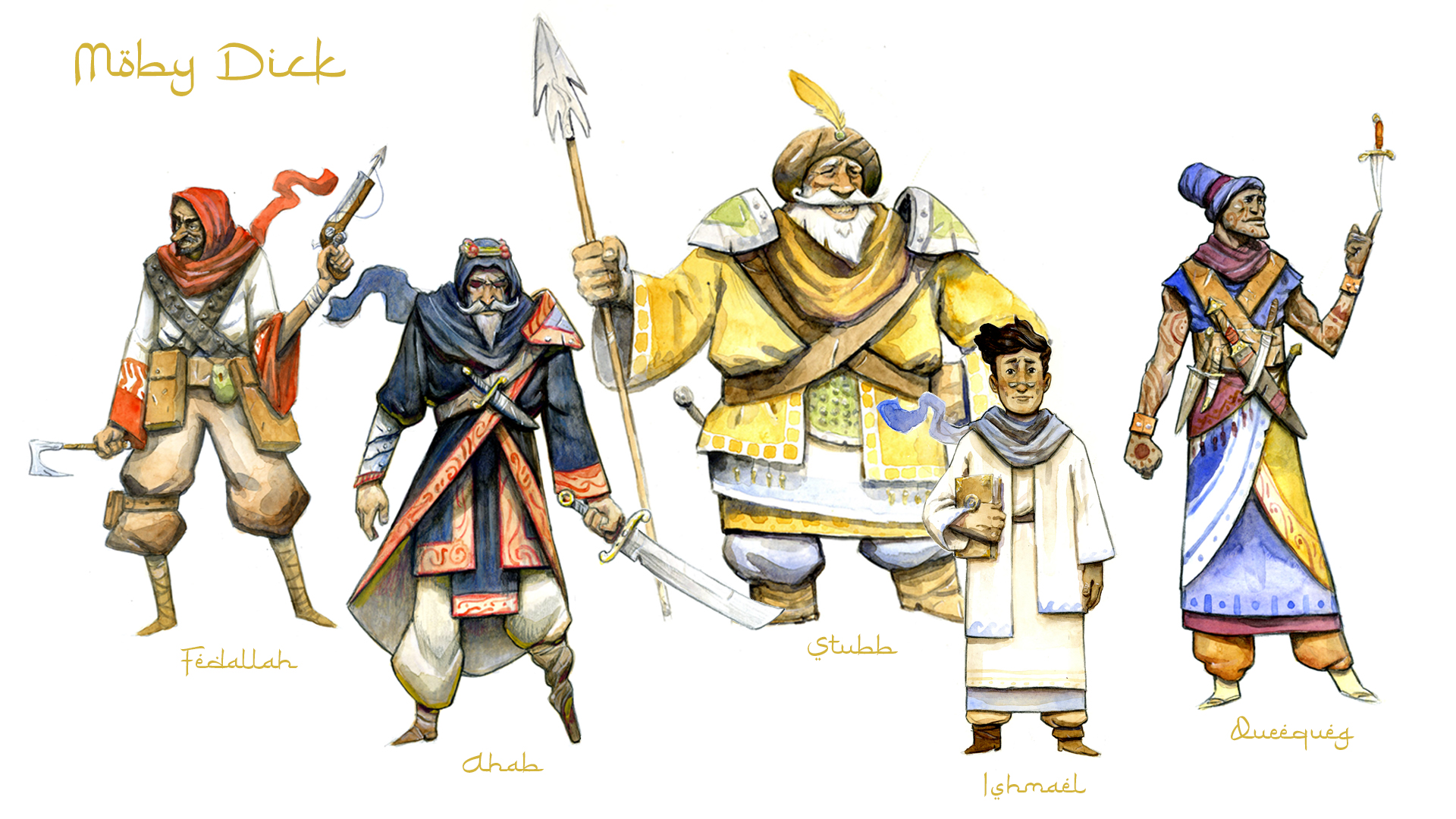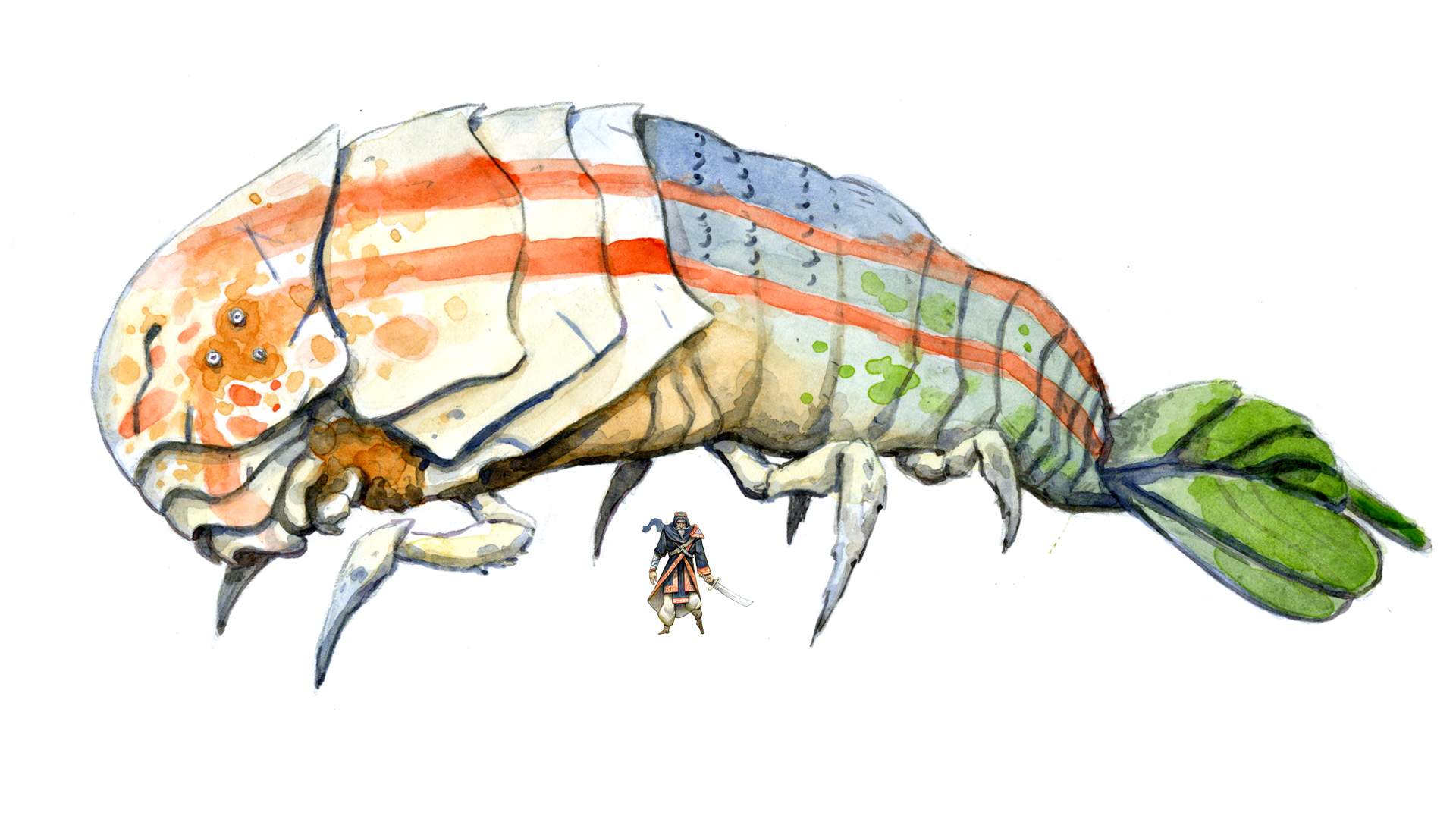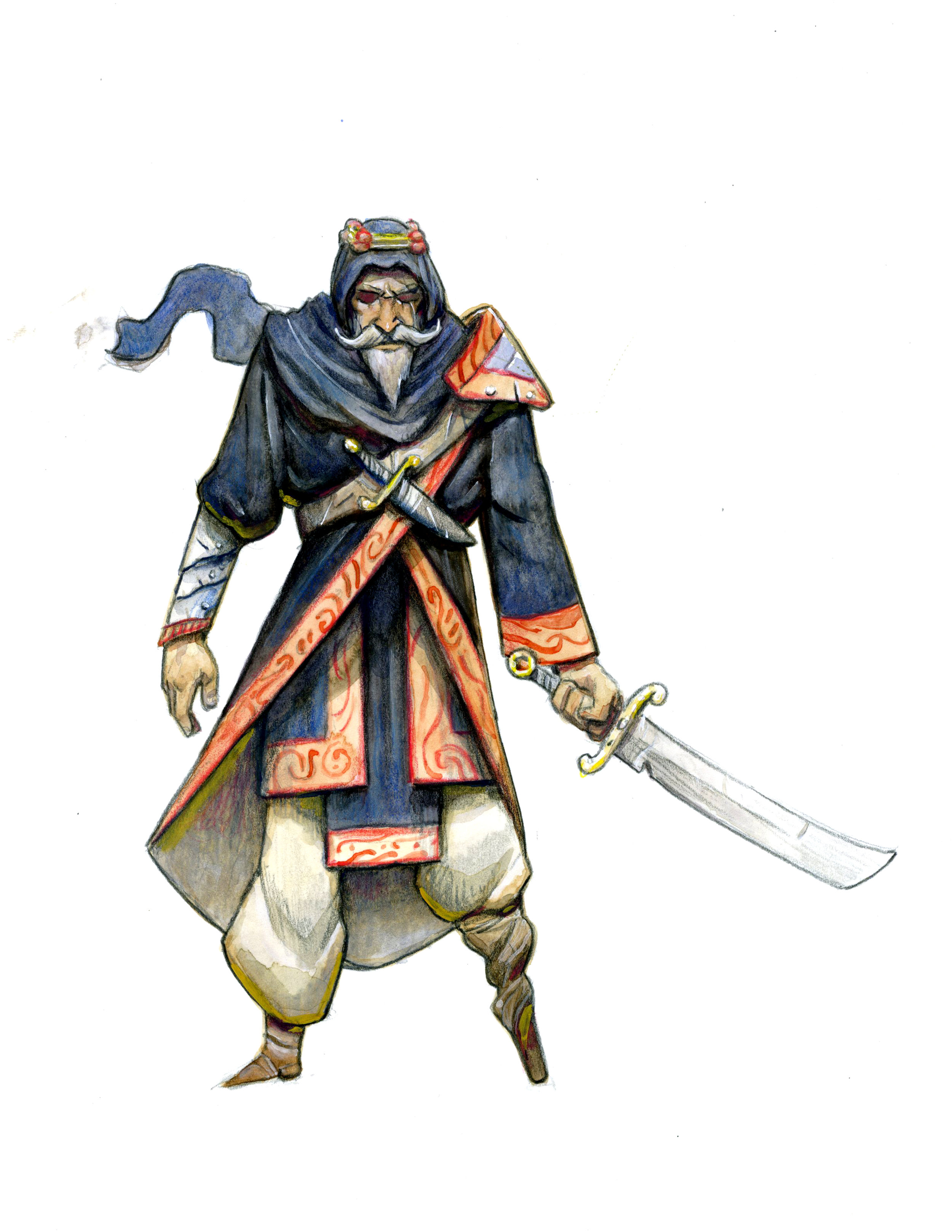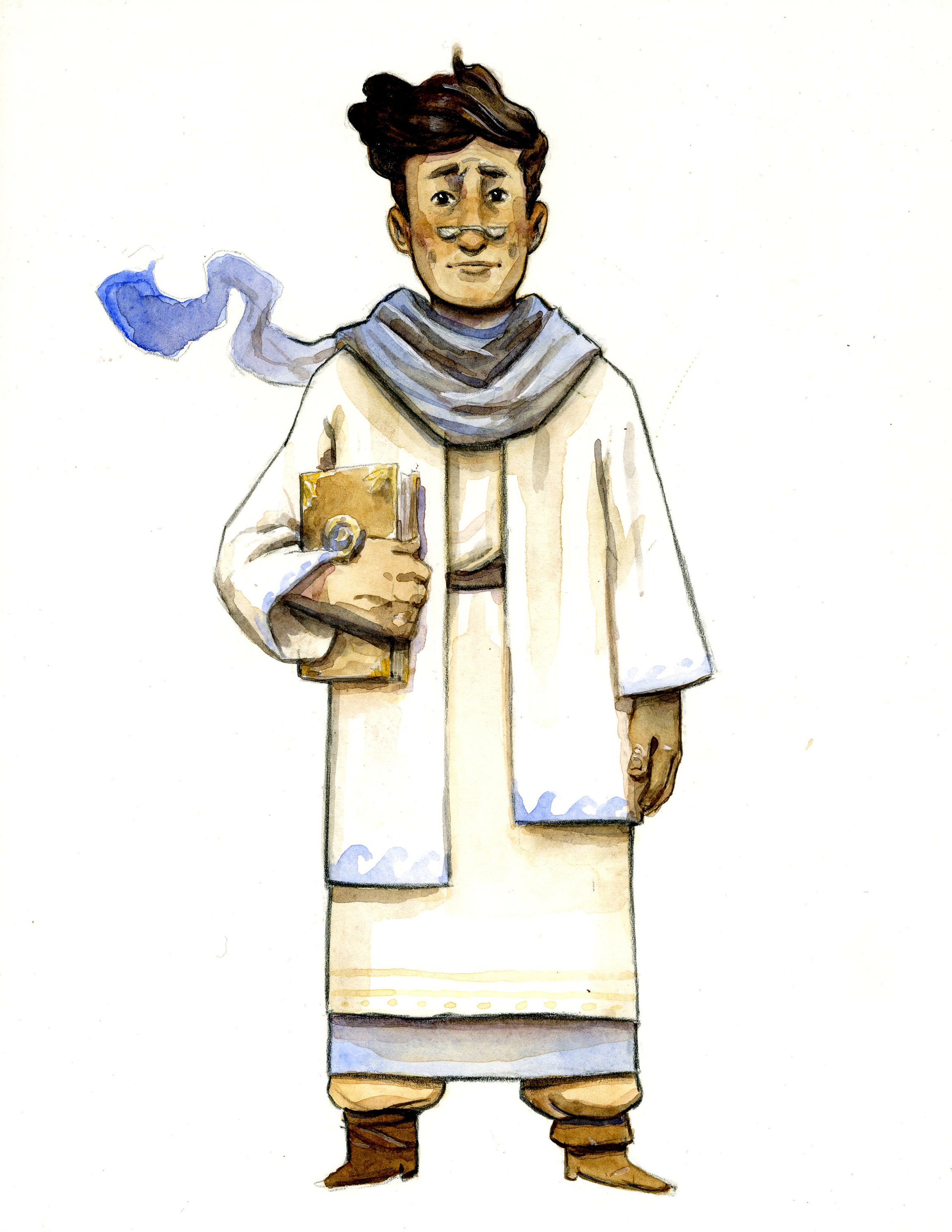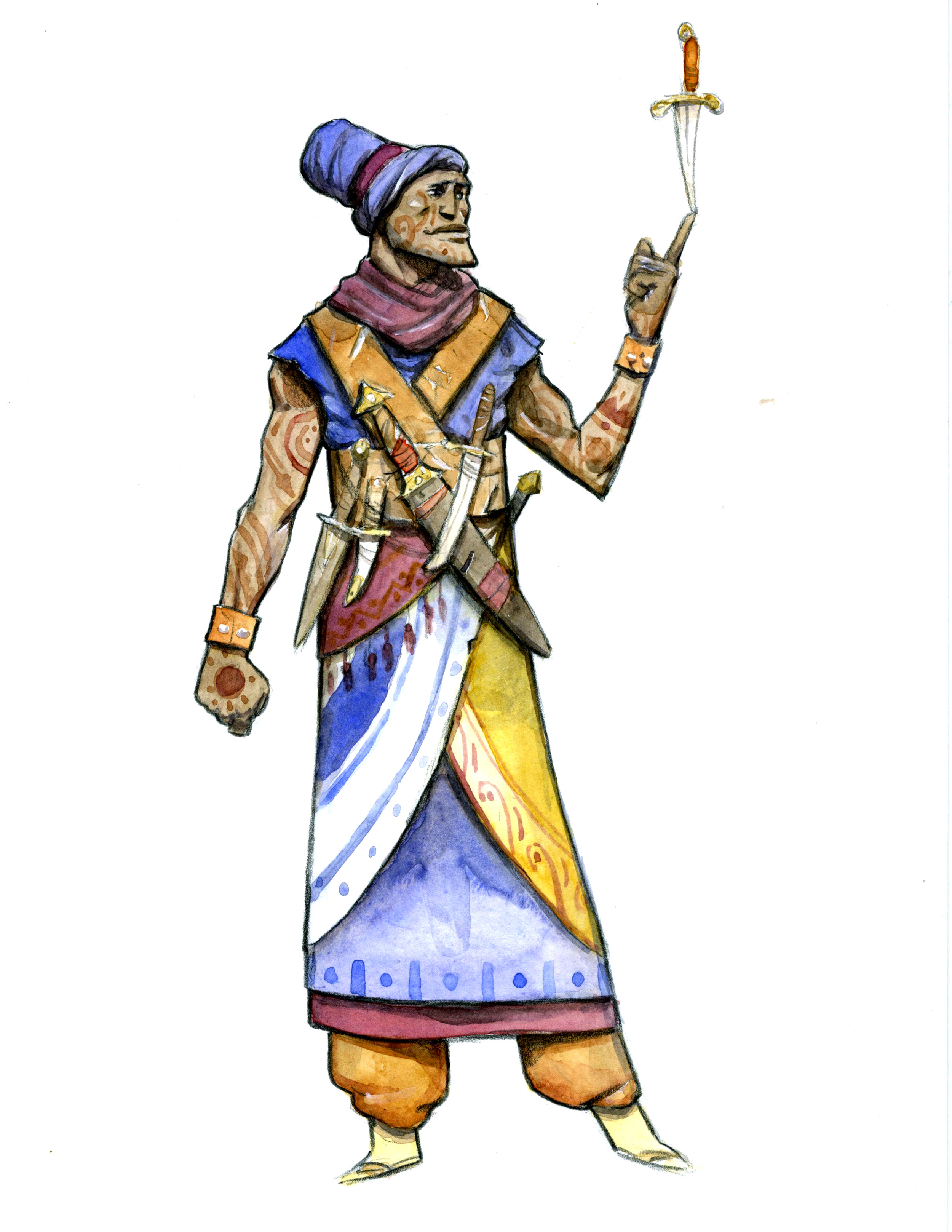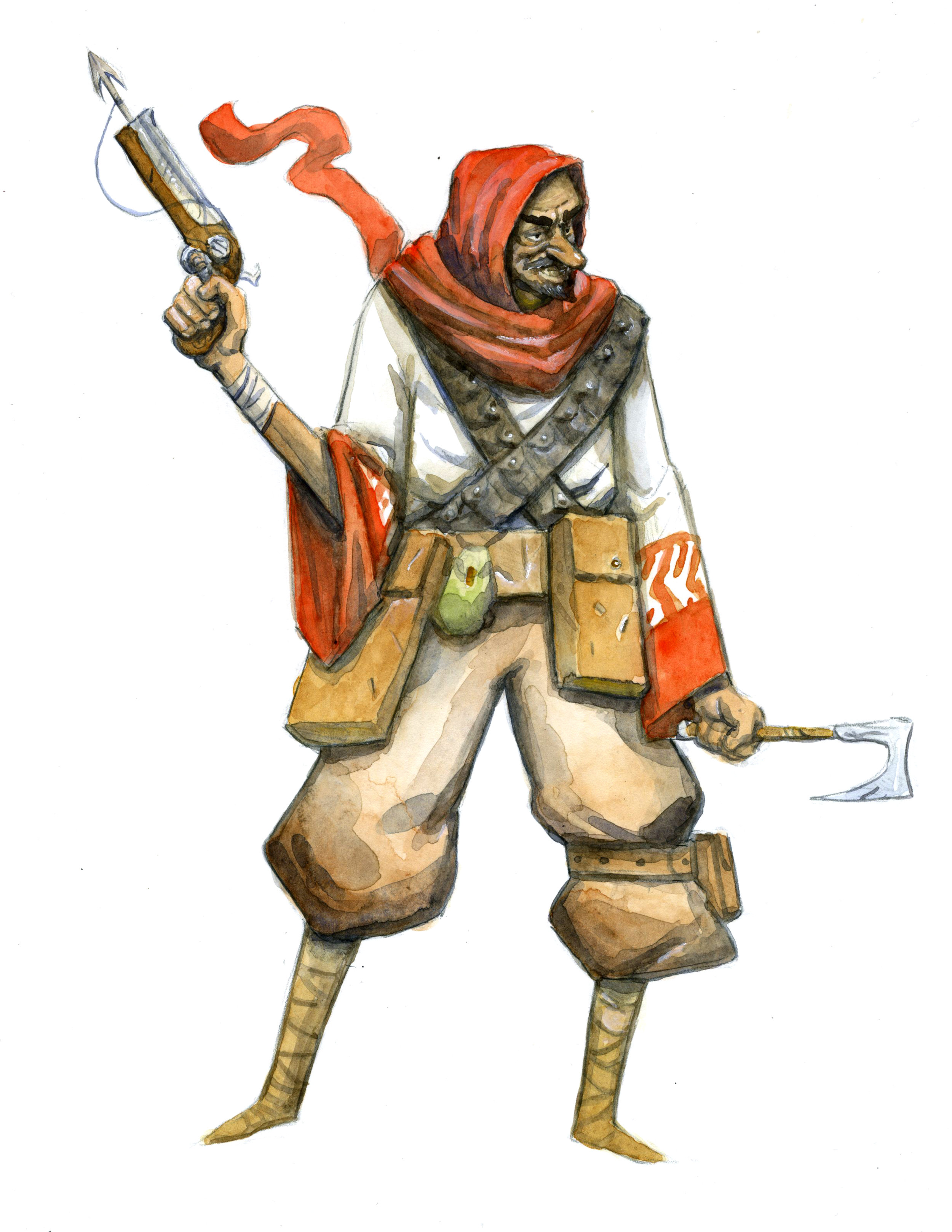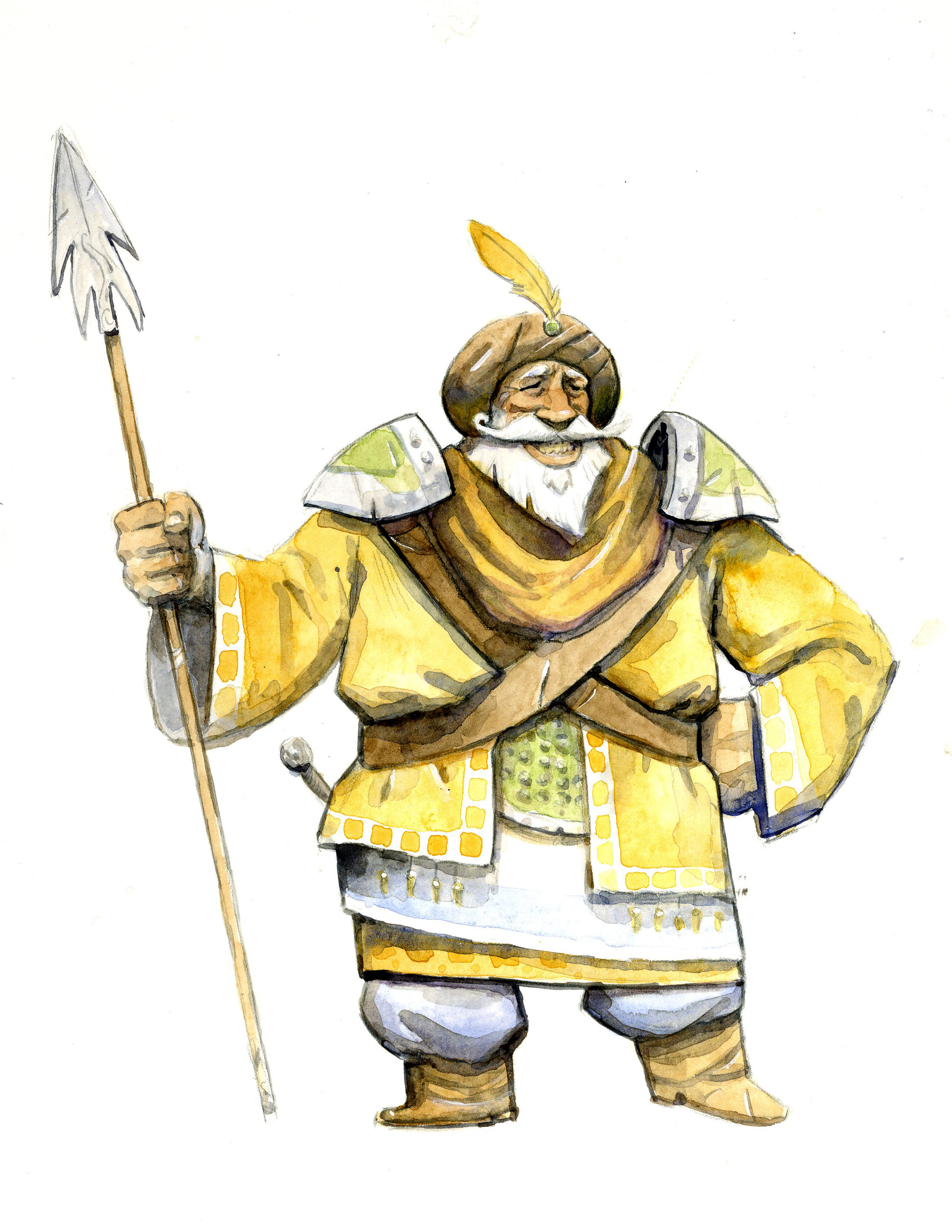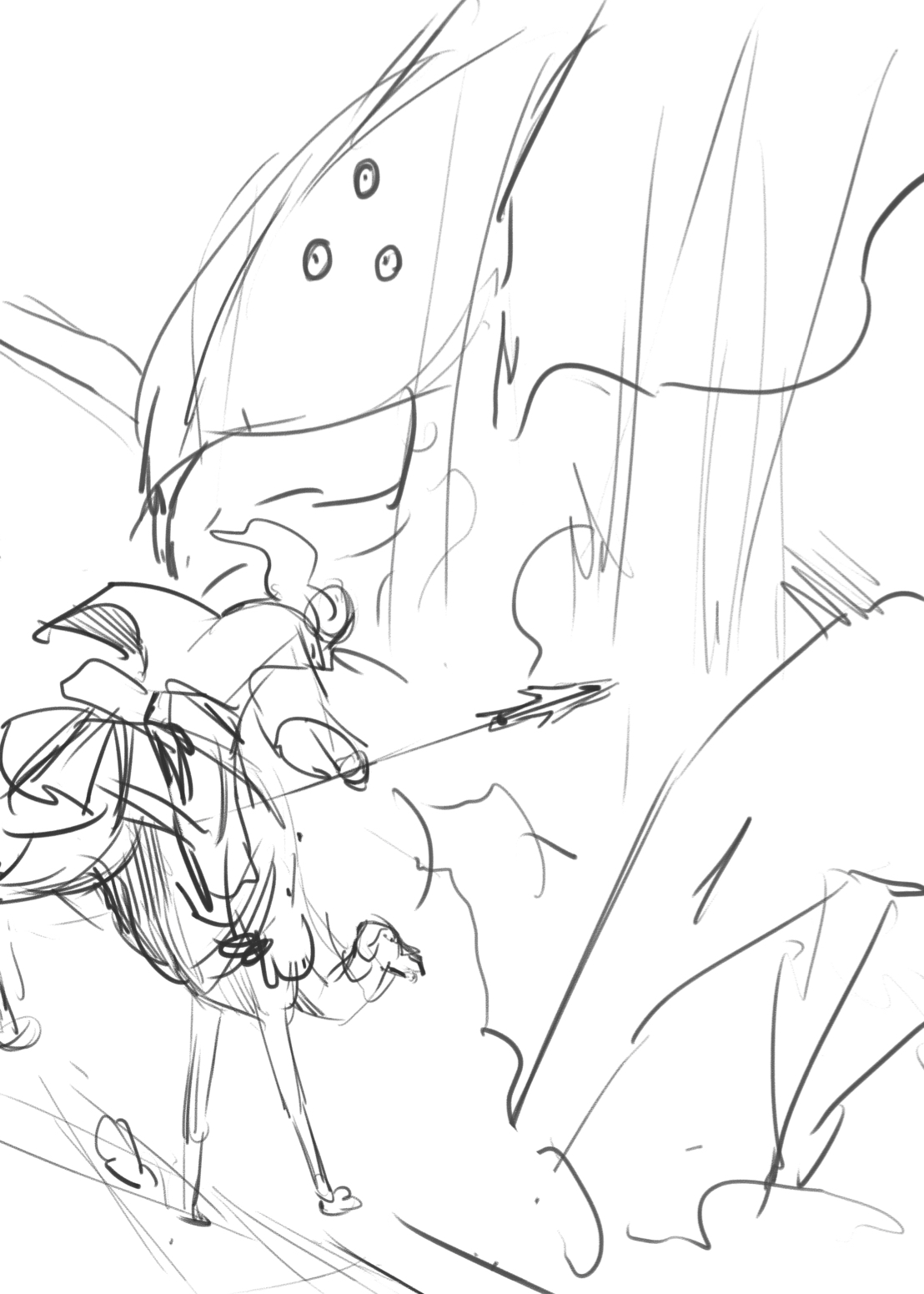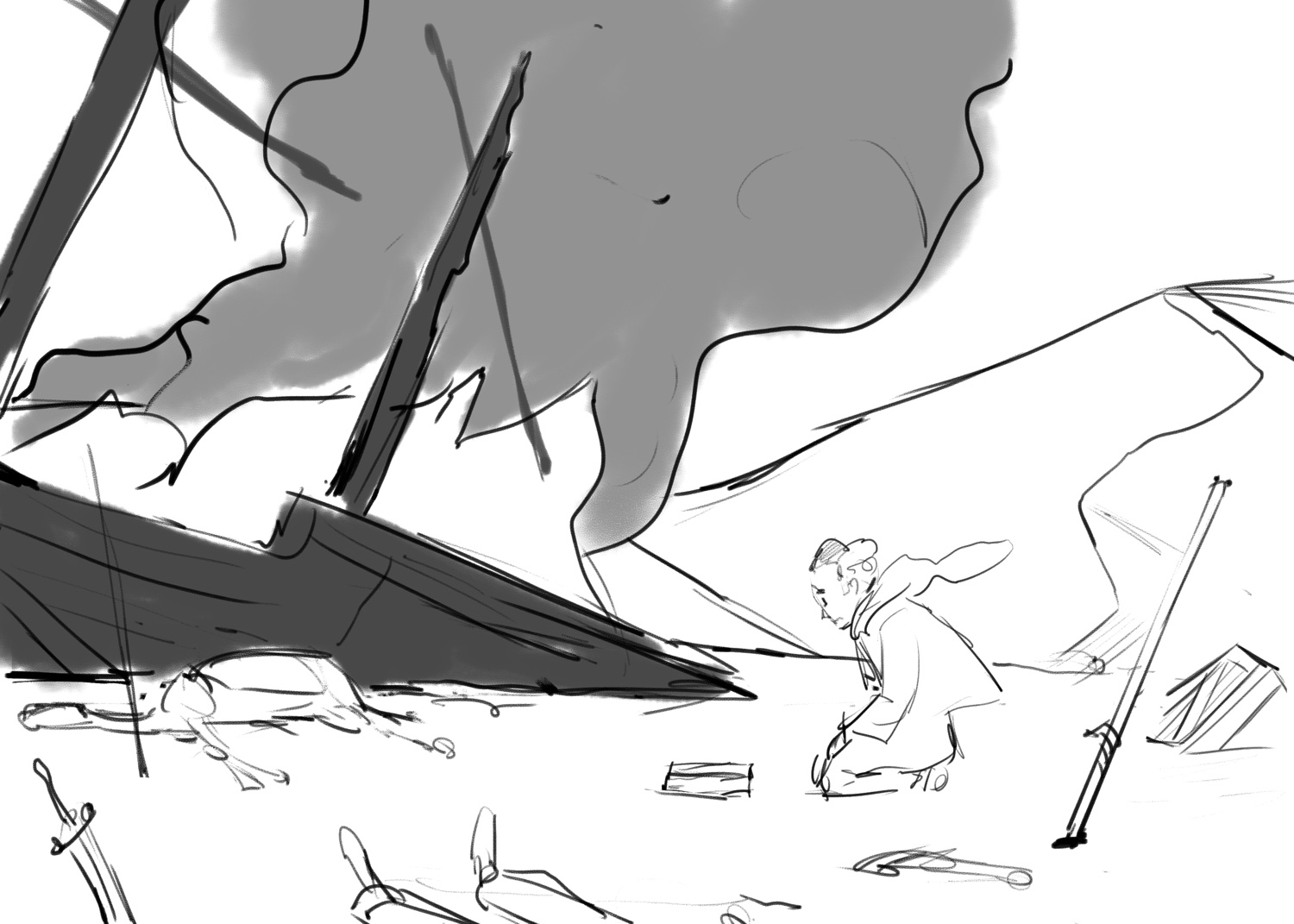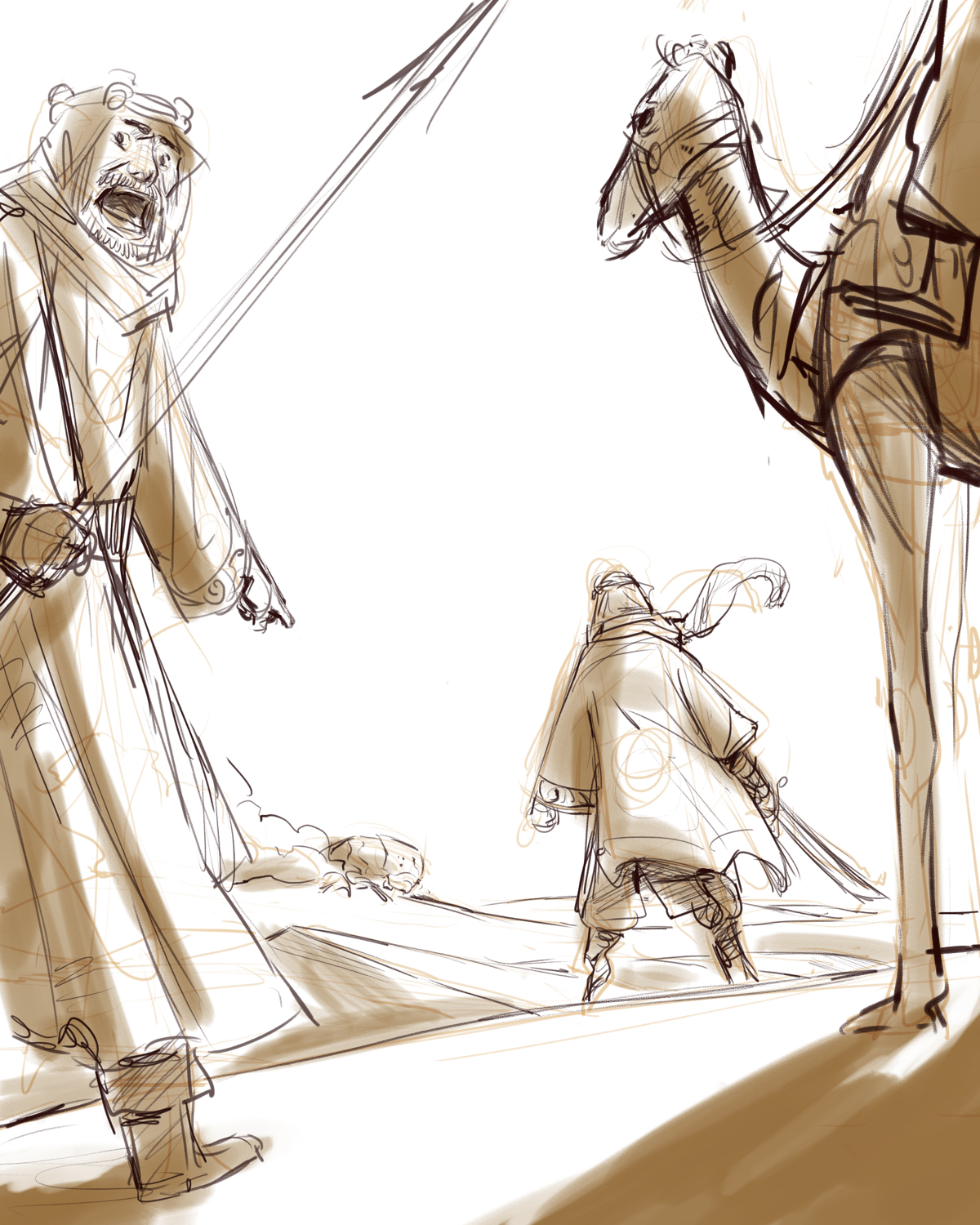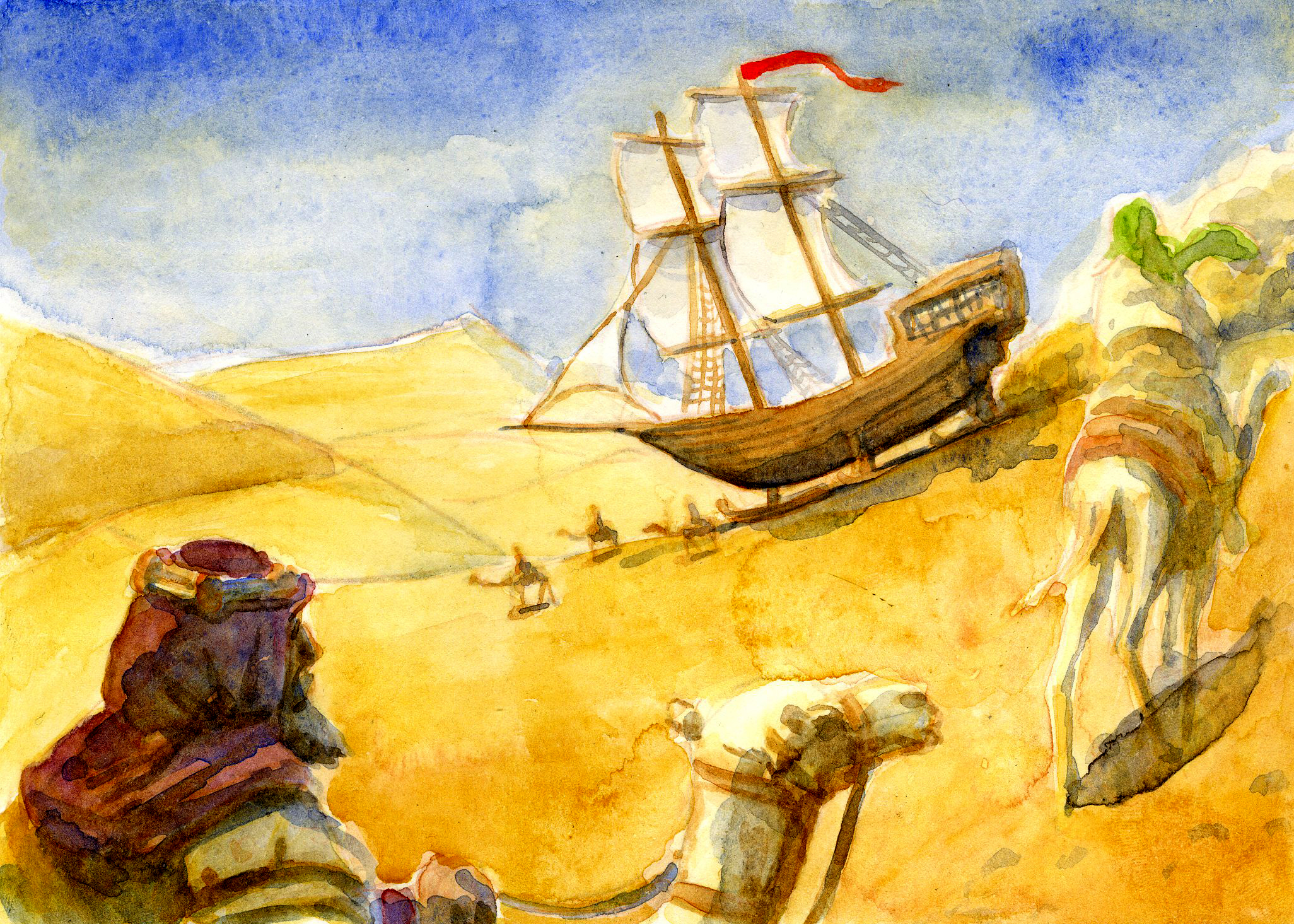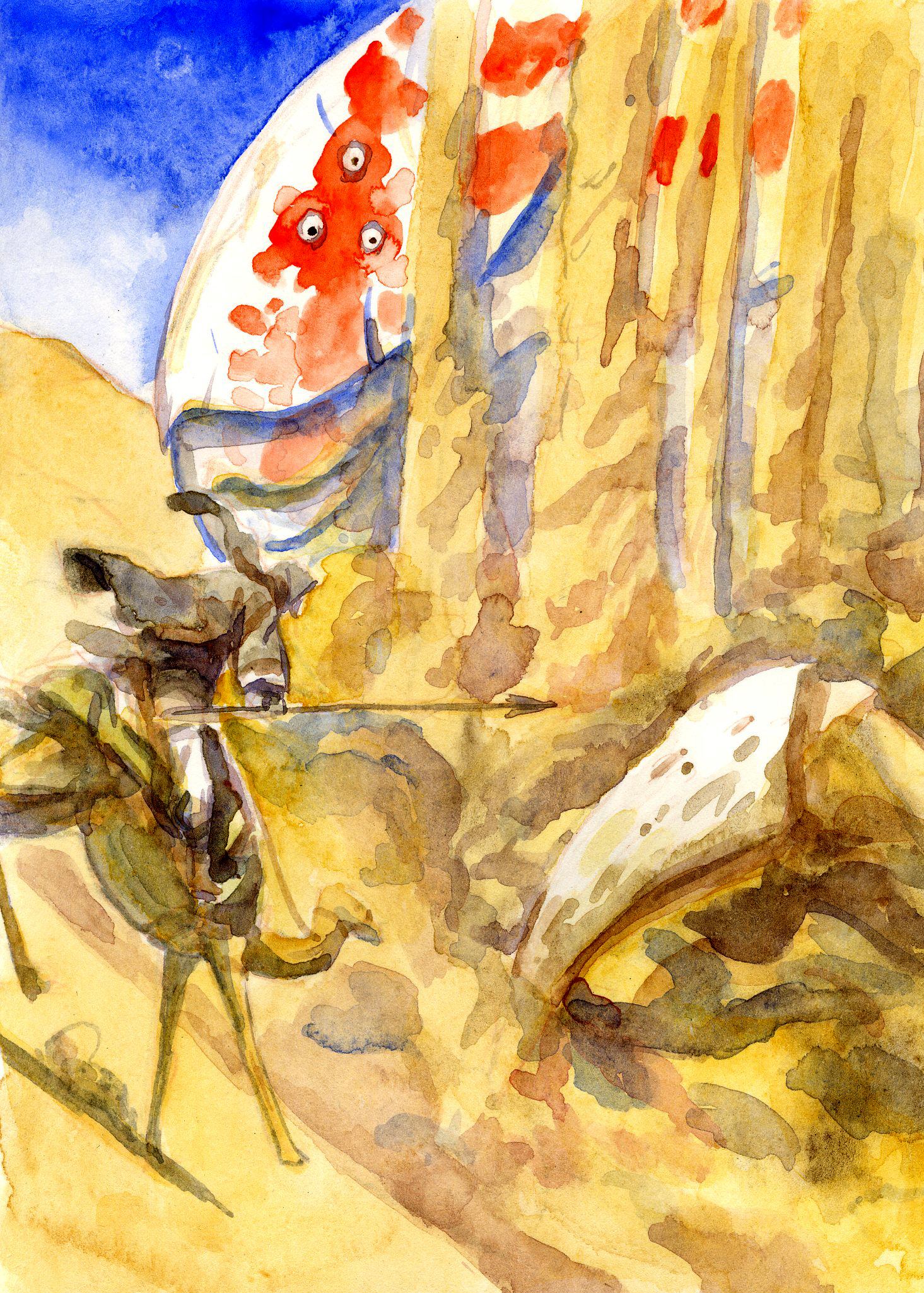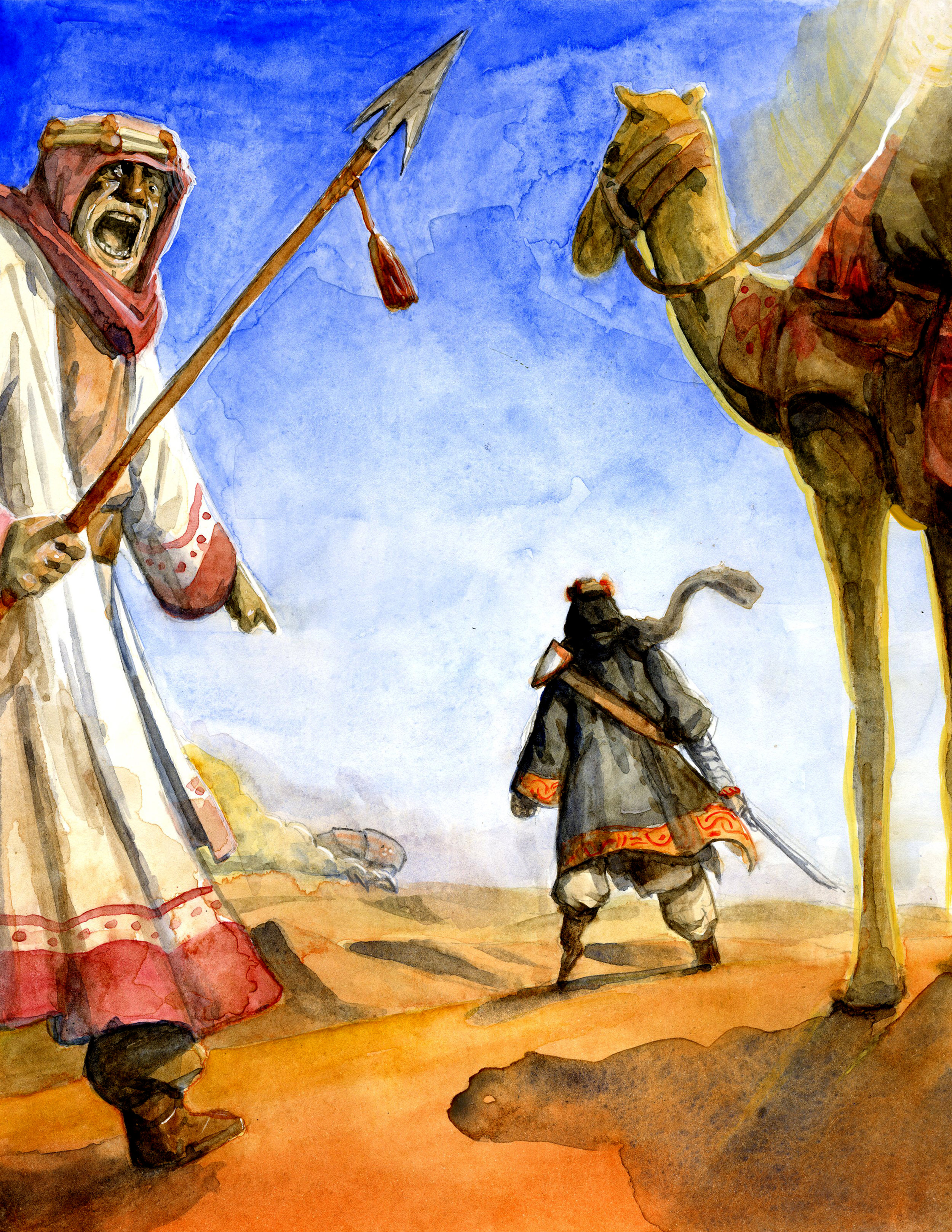I was talking to a friend a while ago. She was a photographer and we were discussing the creative process, and all the similarities and differences between our mediums. There was a moment that really struck me while talking to her. I told her about my figure drawing class, one of my favorite so far, and she said, “Oh, yes, I bet so much of that class is seeing and observing. Like, actually looking at the ears of a giraffe! I can’t even think of what giraffe ears look like, and I definitely couldn’t just draw them off the top of my head!” I thought about mentioning that I could draw them off the top of my head. That 95% of my art school curriculum was learning to draw giraffe ears. That the accurate depiction of giraffe ears is my primary responsibility as a practicing illustrator. Which, in a way, is true. Creation is overflowing with giraffe ears - small beauties that we can easily miss. Even if you can claim to have a good handle on giraffe ears, there’s a good chance you might have overlooked something else, like the patterns of the leaves on the tree in your backyard, or the way light reflects and bounces across a room. I know there are so many quiet miracles that I miss every day. But that conversation with my friend reminded me of what I believe to be a key part to being an artist. Artists need to see the world, the good and the bad, the big and the small, the sacred and the desecrated, and create something true and beautiful in response.
That idea of seeing reminded me of this past Lenten Season. I gave up social media, which for me is really just Instagram. I had felt that I’d been able to keep some control over the app. I’d treated it as a tool, necessary for my profession, but nothing more than that. So I didn’t think it would be a huge commitment to give it up for 40 days. However, giving it up exposed some things in me that I didn’t foresee. I am extremely afraid of awkwardness. If there is any sign of a conversation dying, or an uncomfortable exchange, or if I fumble over my words while ordering food, I look for the nearest exit and escape the interaction as soon as possible. At parties, I situate myself in a place where I can easily bolt to the food table or the punch bowl if things go south. After giving up social media, I realized how easy it is to escape there during situations like that. As soon as I begin to feel that familiar tinge of discomfort, I find that my thumb is sliding over the home button of my phone, much like Frodo and the ring of power. It’s so easy to vanish into that other world that gives me a false sense of control. Giving up social media made me vulnerable, but pretty soon, I found my attention was shifted from my own insecurities outward, to the world around me. For example, the elevator, usually a terrifying little room for me, soon became somewhat of a delight. The silent, unescapable, overwhelming nearness to strangers was so awkward still, that didn’t change, but suddenly I was getting to connect with people. I wasn’t necessarily having deep talks or anything, but I witnessed wonderful moments, and actually saw the people standing next to me. During those forty days, I felt awakened to the small, strange, meaningful moments that inhabit so much of our life.
My attention to everyday life was further strengthened because I was taking my figure drawing class during this same lenten period. From day one, my teacher drilled into my class the idea that we needed to basically unlearn how we see. We all have preconceptions for everything. Preconceptions about how a foot should look, where a nose should go, how an arm bends. But when drawing from life, you have to let go of what you think you’re drawing, and draw what is actually there. This is hard to get one’s mind around. This approach forced me to observe, and really consider the nature of whatever it was I was drawing. And after seeing, and knowing the object I was drawing, a kind of love was born for it. Life drawing is putting yourself in the shoes of what you’re drawing, which I think is empathy. One week we would focus on drawing hands, and outside of class, I would be in wonder at all the beautiful, unique, complex hands that populated campus. We dealt with many of the same principles in my animation class. We were learning the basics of animation, how a person walks, runs, moves, act and I began to pay attention to how someone drank a cup of coffee, and how someone sprinted to a class he or she was late to. I became amazed at the simple act of sitting down and standing up. I was learning to draw better, but I was mainly learning to see better. Getting outside of myself and loving the objects that I was drawing taught me a lot about God, his world, and his nature as a Creator.
To continue my rambling, these ideas were further developed this past summer in Europe. While I was in Ireland with my family, a painter named Ross Wilson, my dad and I made a little trip to a small town called Bellaghy, where I was offered the chance to visit a museum dedicated to Seamus Heaney, the renowned Irish poet. I cannot say that I was familiar with his work, I’ve only read his translation of Beowulf (which I completely love). Always the party animal, I answered with a hearty yes. Seriously, I love museums. It was a relatively new museum, constructed only a few years after Heaney’s death in 2013. One of the museum’s finest features was a personal audio device, like a telephone, with which one could punch in a couple of numbers and listen to the wonderful voice of the poet himself reading his own words. And he read them right. His voice was soft and gravely at the same time, with a light and dancing Northern Irish accent. It fell pleasantly on my ears. Heaney is known for his deep connection and love of Ireland. He was born in County Derry in 1939, in a small town, surrounded by farms, soil, and worn hands. He went on to win a Nobel prize for literature in 1959, as well as teach at Harvard and Oxford. Despite his obvious academic success, Heaney steered clear of cryptic, heady language, and instead made his work accessible for the average reader, the common man, which made him popular across the board. It was fascinating me to see how much the Irish revered him. This quiet, kind-faced, poet was a celebrity! Why? As I made my way through the museum, there was poem after poem about nothing especially extraordinary. In fact, the poems focused very intently on the ordinary. This was somewhat of a shock for me, or at least caught me off guard, since I had connected him with the grand scale of Beowulf. As a 20 year old, Gen Z, I’ve grown up in an age of sensationalism at its finest. Everything is huge, cataclysmic, grand, polarized, and there isn’t much room for quiet. So I wasn’t quite used to thinking in terms of the ordinary. But by the end of the exhibit, I realized that the reason he connected so well to so many was his effort to, as Ross Wilson said, exalt the ordinary. I thought, okay, that’s all well and good, but ordinary for him is Ireland for goodness’ sake. He can “exalt the ordinary” and it ends up extraordinary just because everything in Ireland is extraordinary (that’s my American opinion anyway). But interestingly enough, after awhile, reading his poems made me think about Tennessee, not Ireland. I began remembering the little characteristics, good and bad, that made me love my little spot outside Nashville. And I suddenly felt an intense homesickness, standing in that museum. I love the Tennessee autumn, the music that perpetually fills the air, southern hospitality, the storms that rock our house, and the soft hills. Heaney’s love for Ireland actually made me realize how much I loved my own soil. [This is what the best art should do - by showing love, it inspires love] I believe where you come from is significant. Place. Time. Circumstance. They’re all wrapped up into who we are. It seems that’s what Heaney thought.
I had a very happy childhood in an objectively cool city, so I don’t want to speak out of turn, not everyone loves where they grew up, and it might be best to get away from your birthplace and start fresh… BUT! What if everyone saw their cities, communities, homes, through the eyes of a creator and through the eyes of the Creator? Some might say that there are some places that are unredeemable, places so broken, so ugly, that it would be impossible to see any quality of beauty. But what if we have the imagination to see creation through the lens of redemption? Despite the brokenness of where we come from, could we see it made new? Isn’t that the significance of the Gospel? Jesus came from one of the dirtiest places imaginable for a king, but because of his death and resurrection, that place became the most beautiful. Jesus started the great reversal. I love the detail that Jesus still bears scars after resurrection. He has a redeemed body, he didn’t just restart. He is still the Jesus that was born in a tiny, uninteresting little town. And his scarred hands are just as real as the ears of a giraffe.
My photographer friend reawakened me to the truth of the life we live. We have only to look at the fantastical, mundane world we are a part of to remember that though we might come from ugly places, God has redeemed the world, and is faithfully making a new creation. And I believe that art is incredibly important to unveiling and pointing to that reality. So I pray that God will open my eyes to see, so that I draw the world according to the truth of the gospel.

